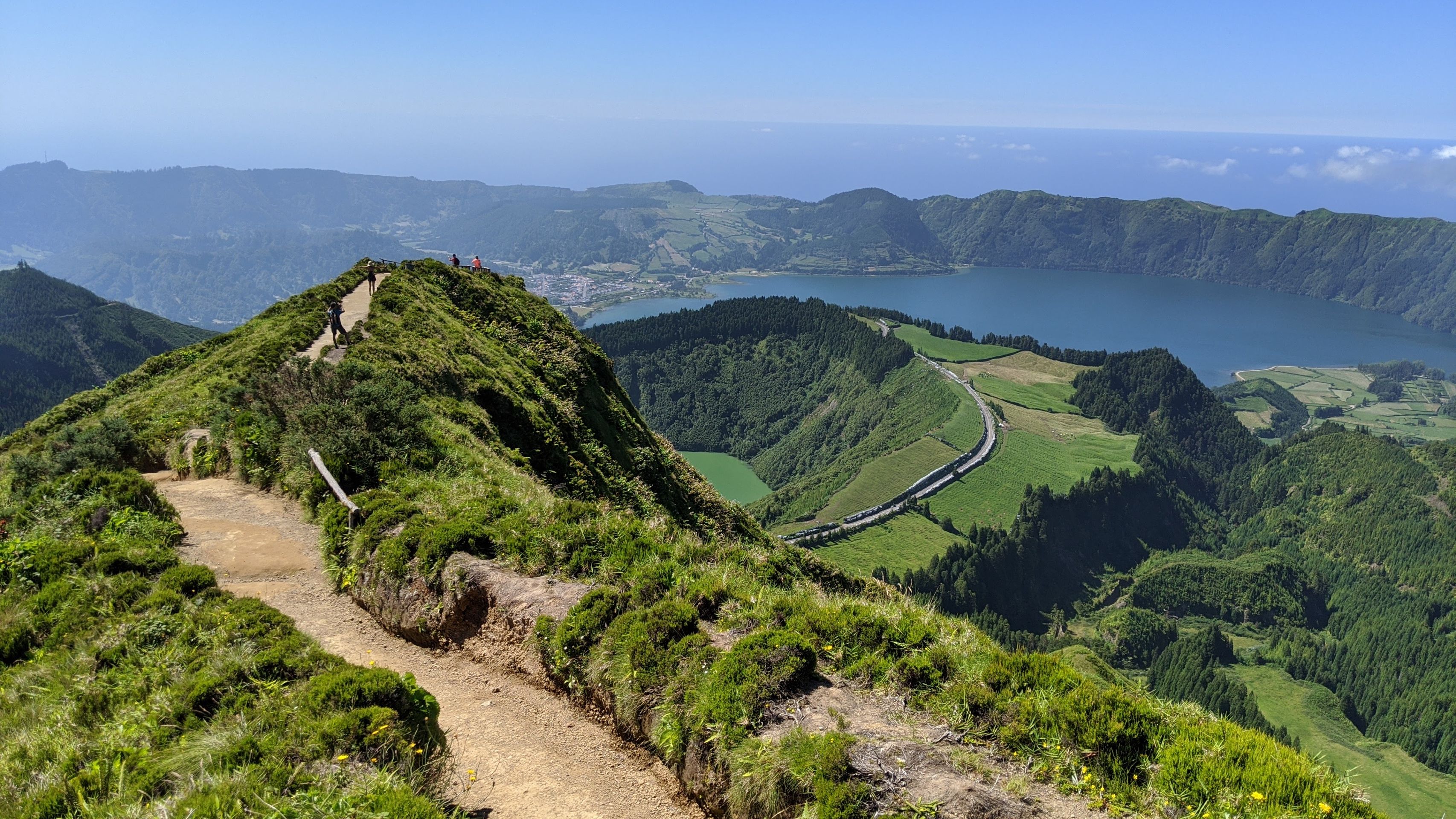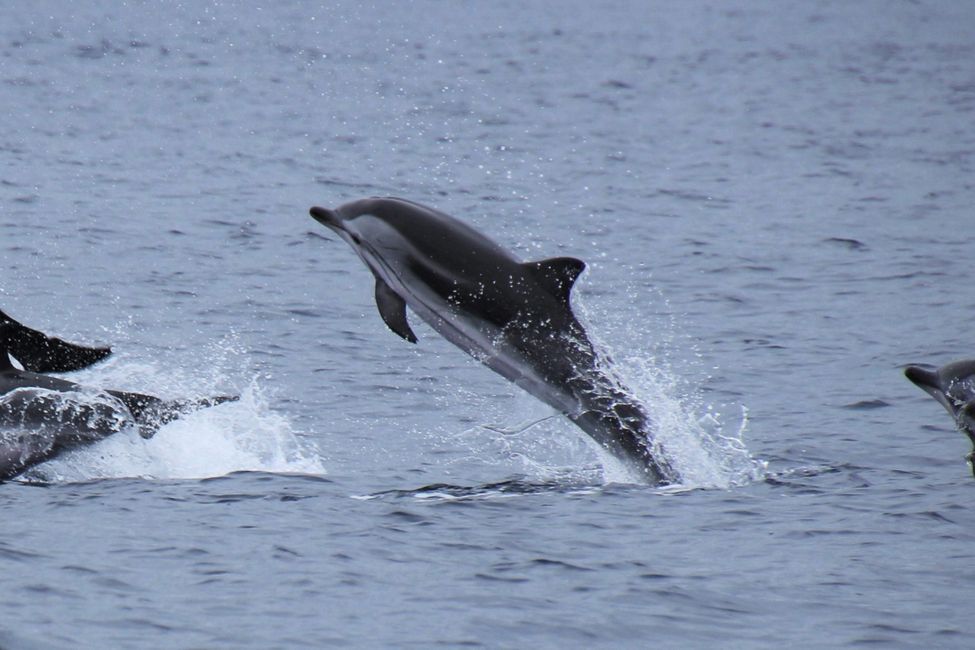Day 18: Whales, dolphins, and cows .... many cows on Pico
פֿאַרעפֿנטלעכט: 11.08.2020
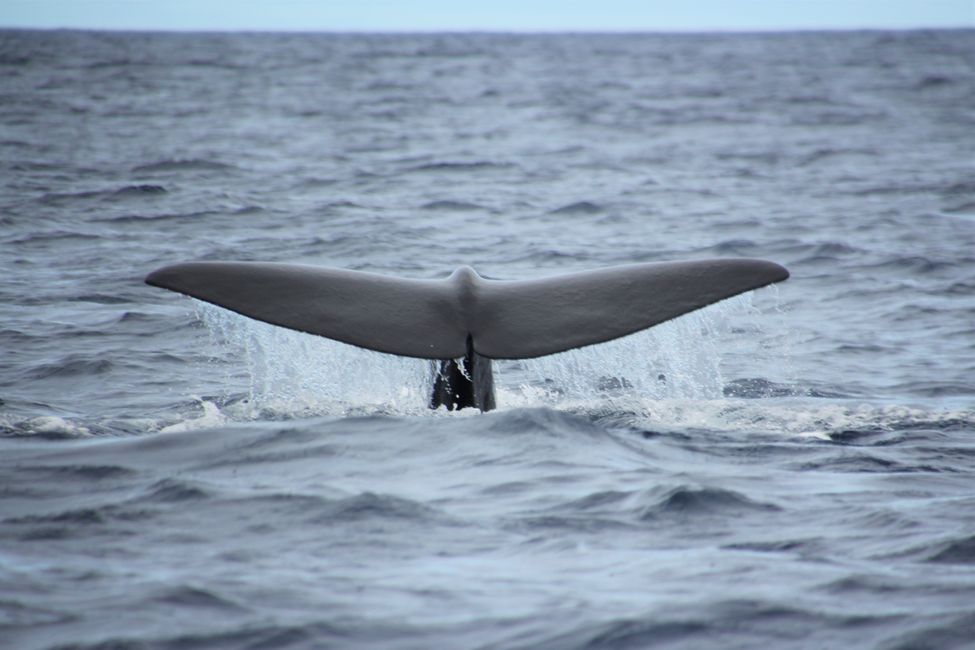
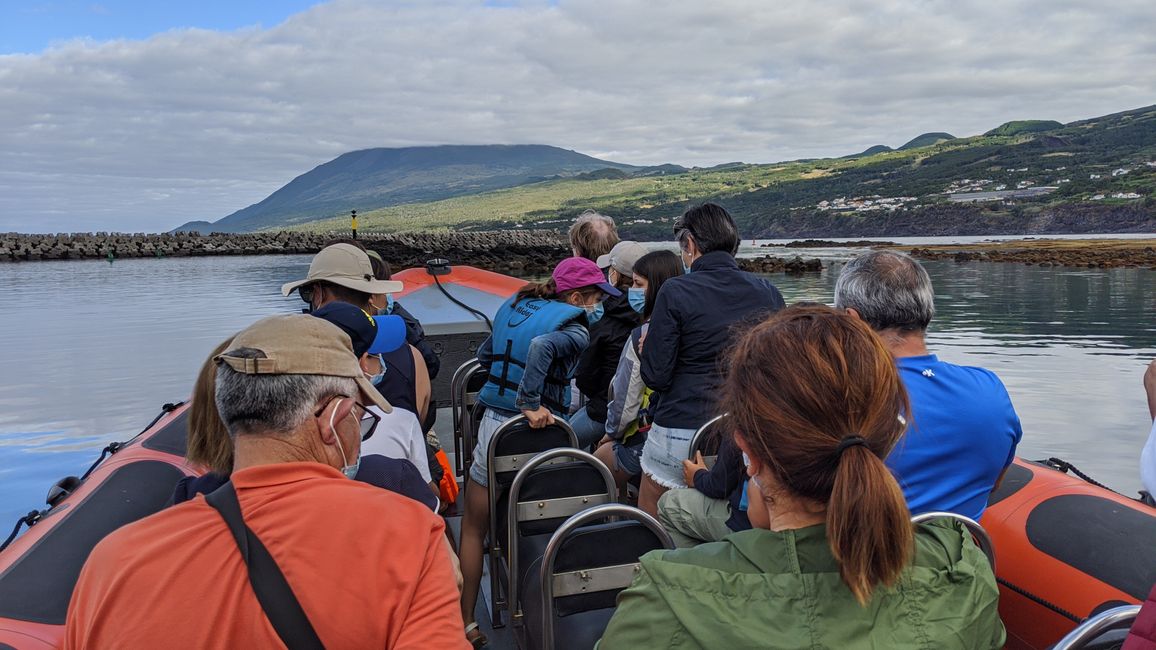
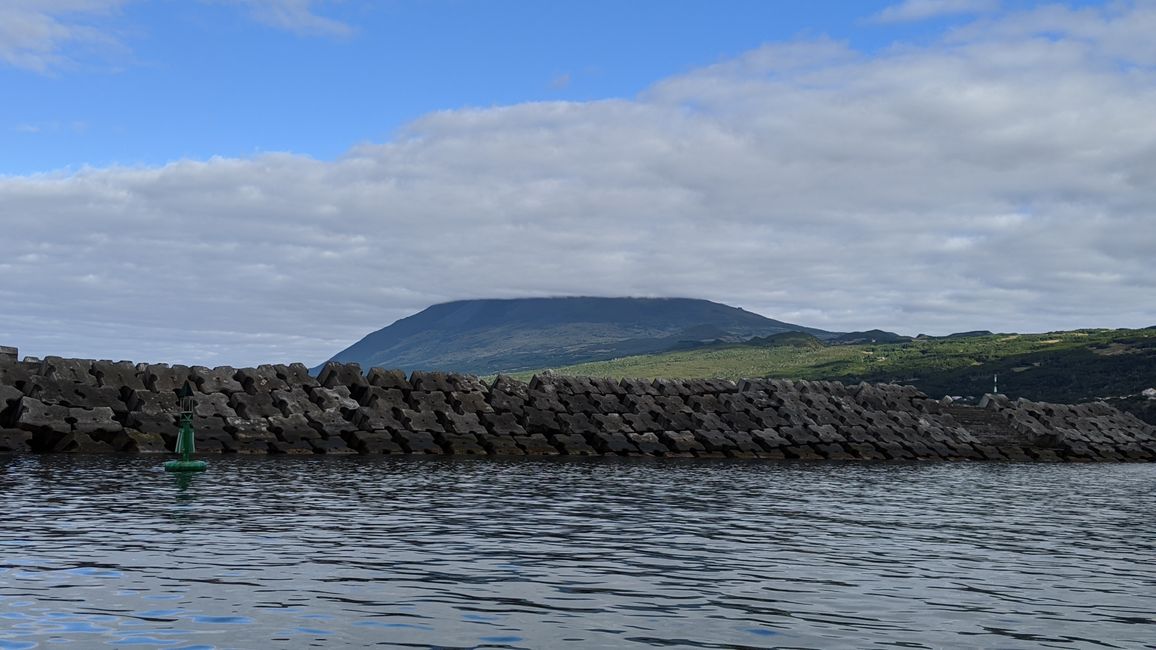
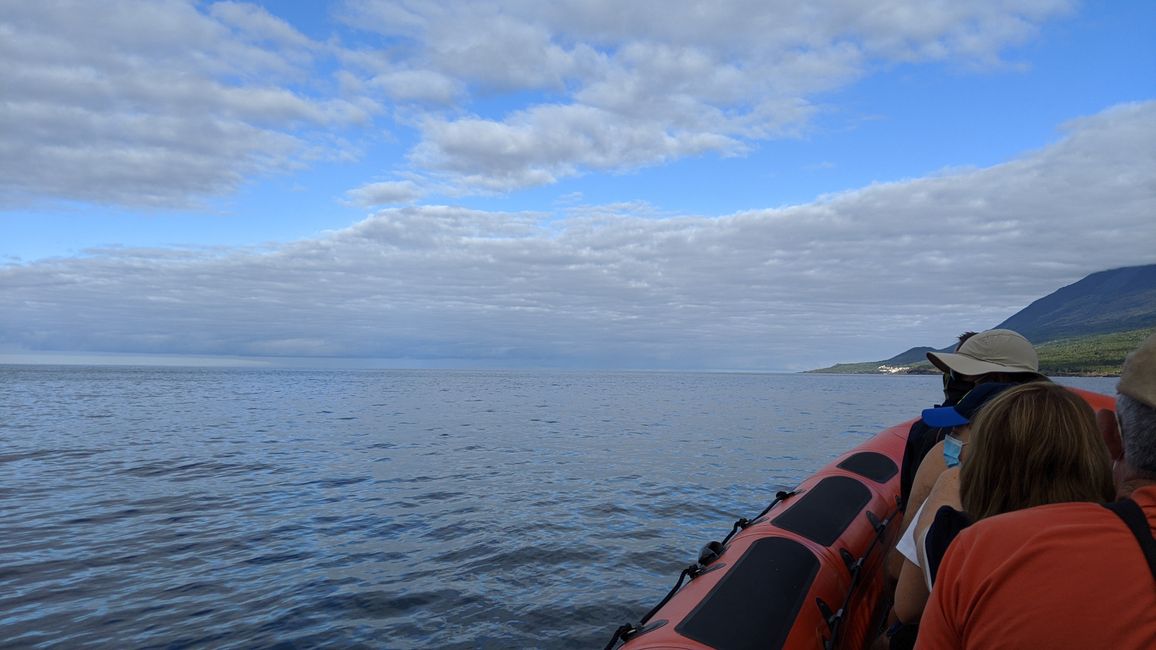
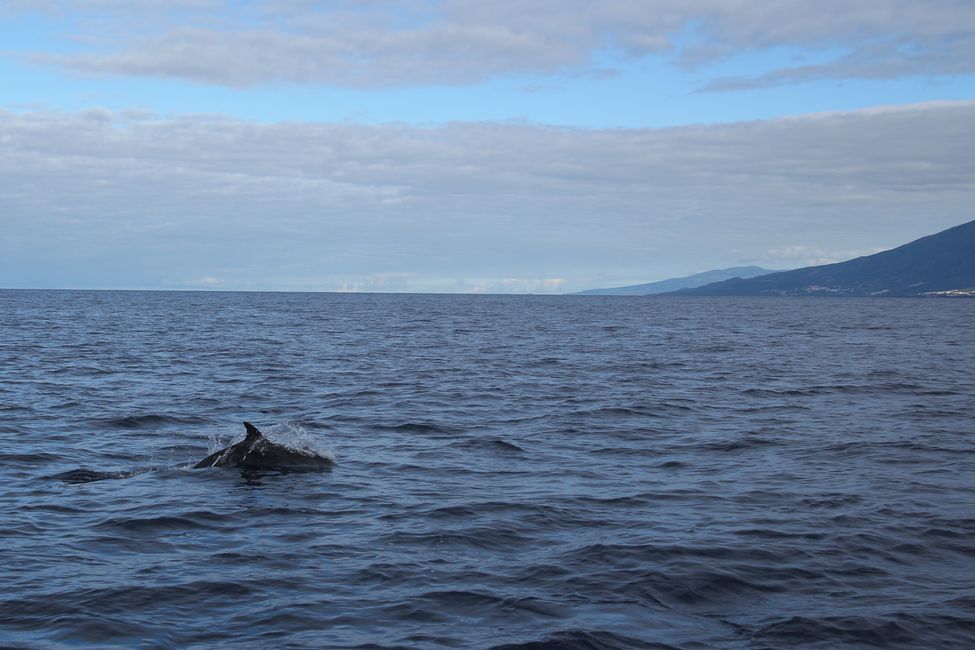
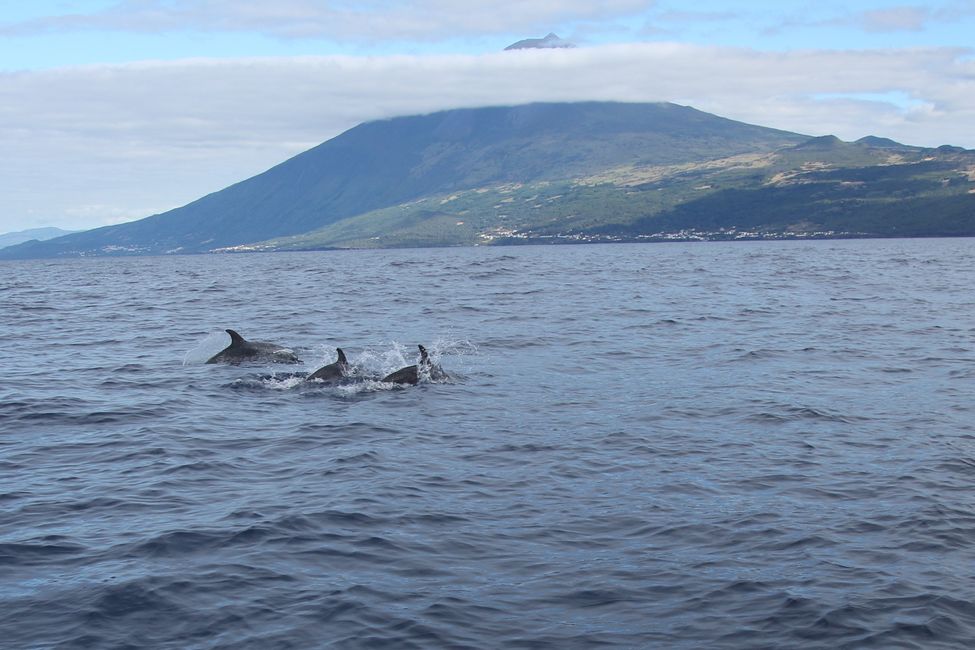
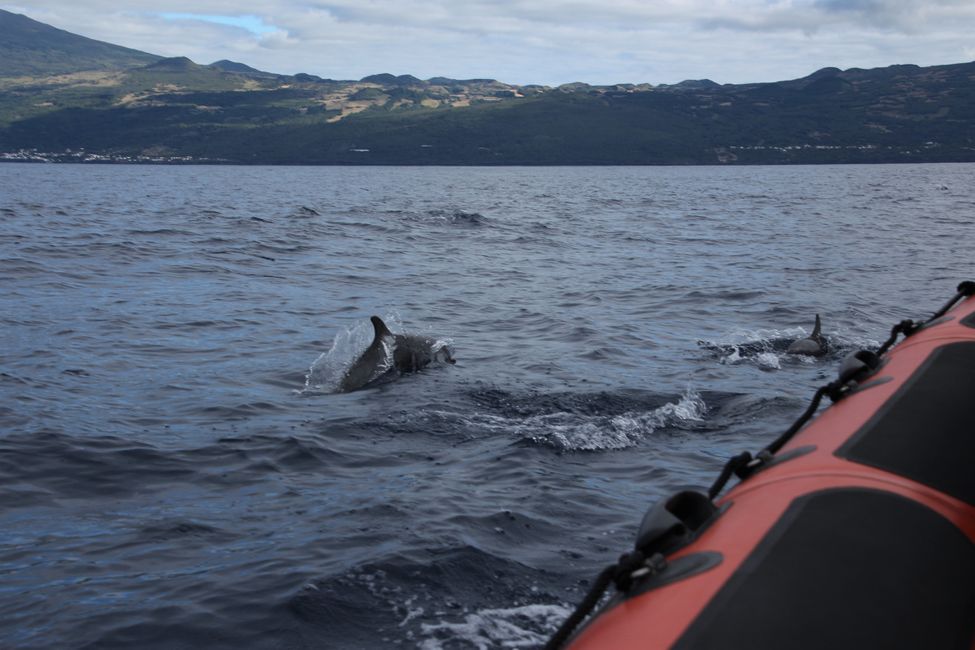
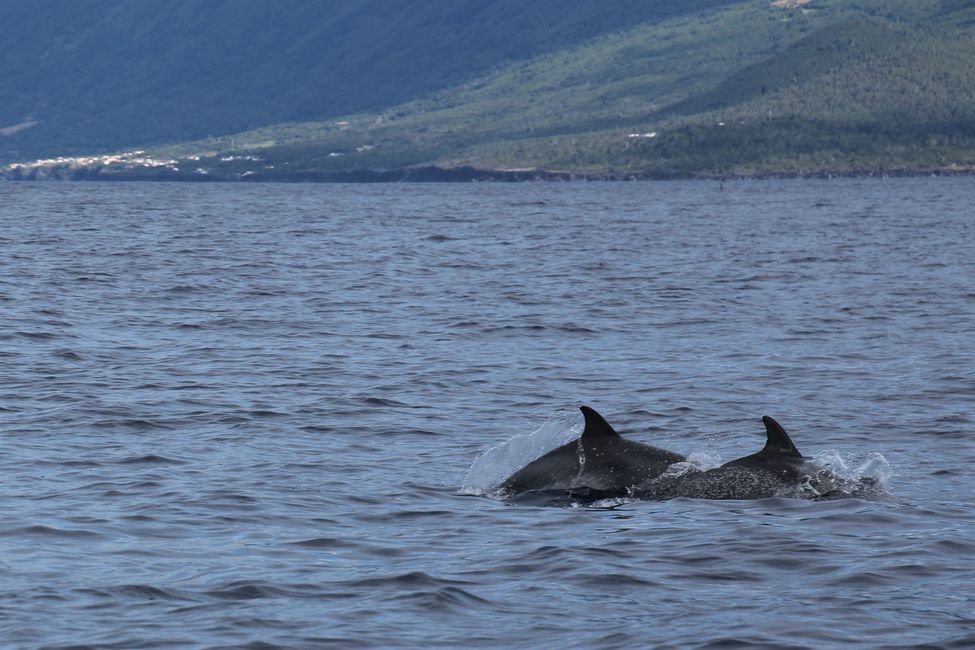
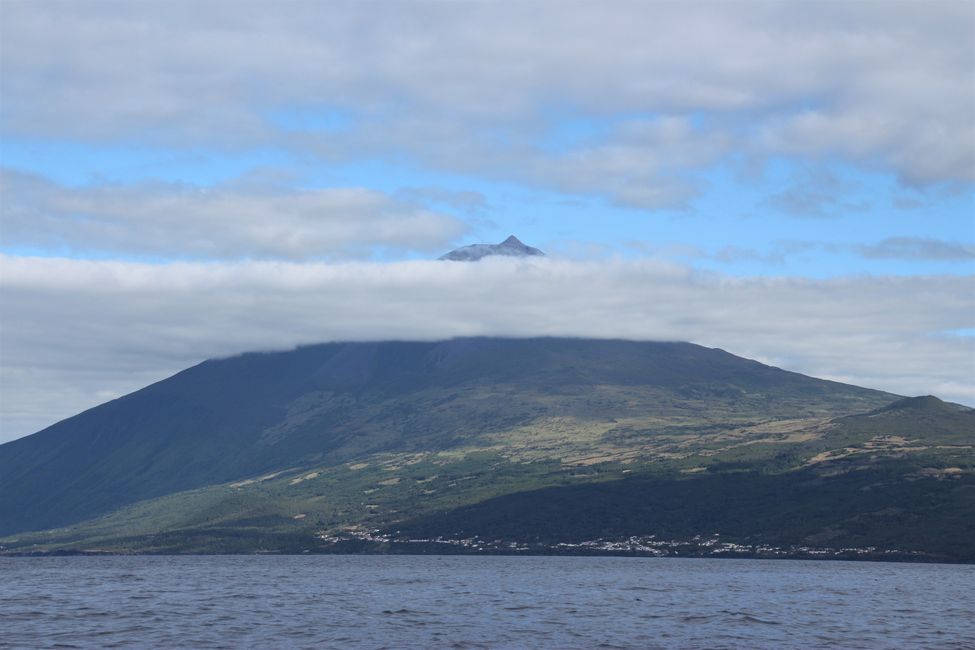
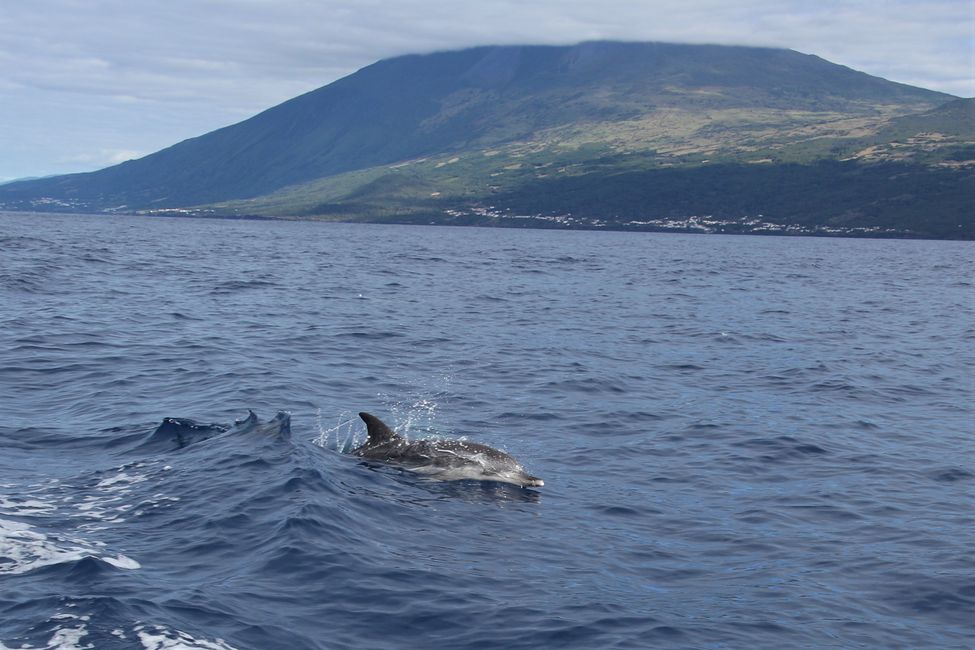
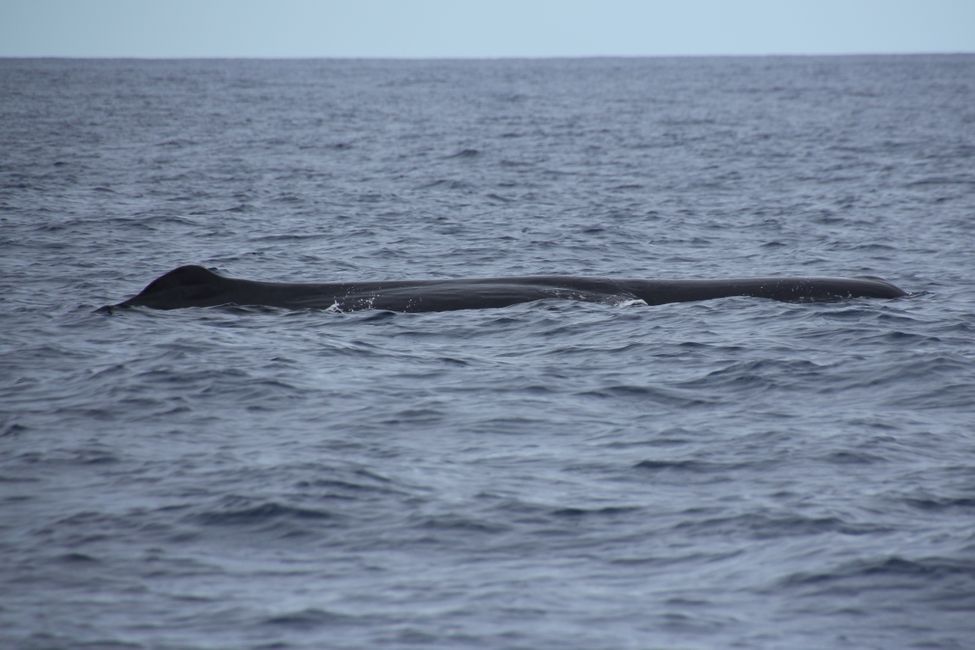
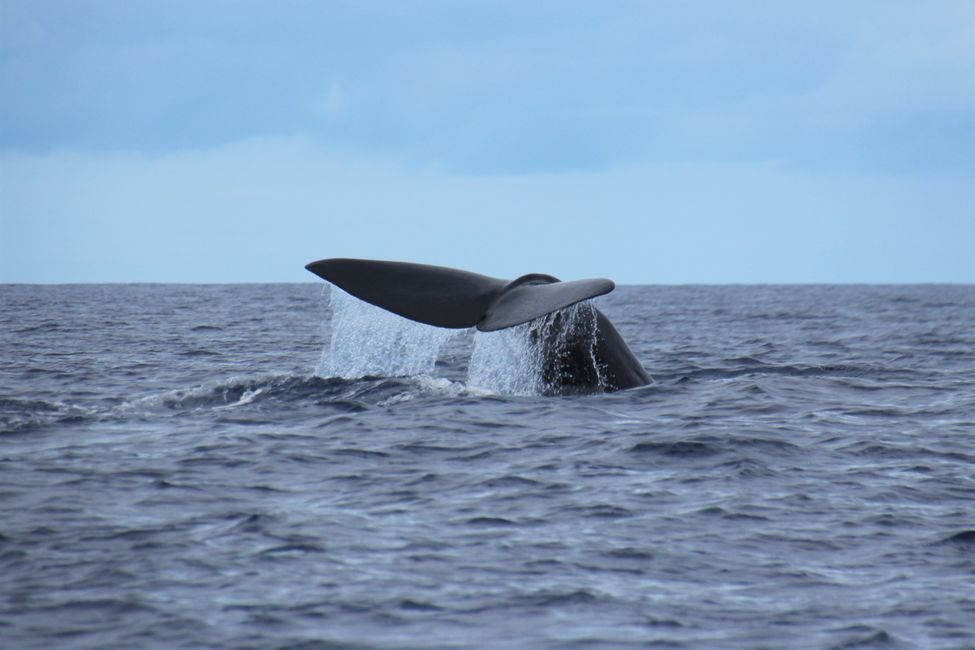
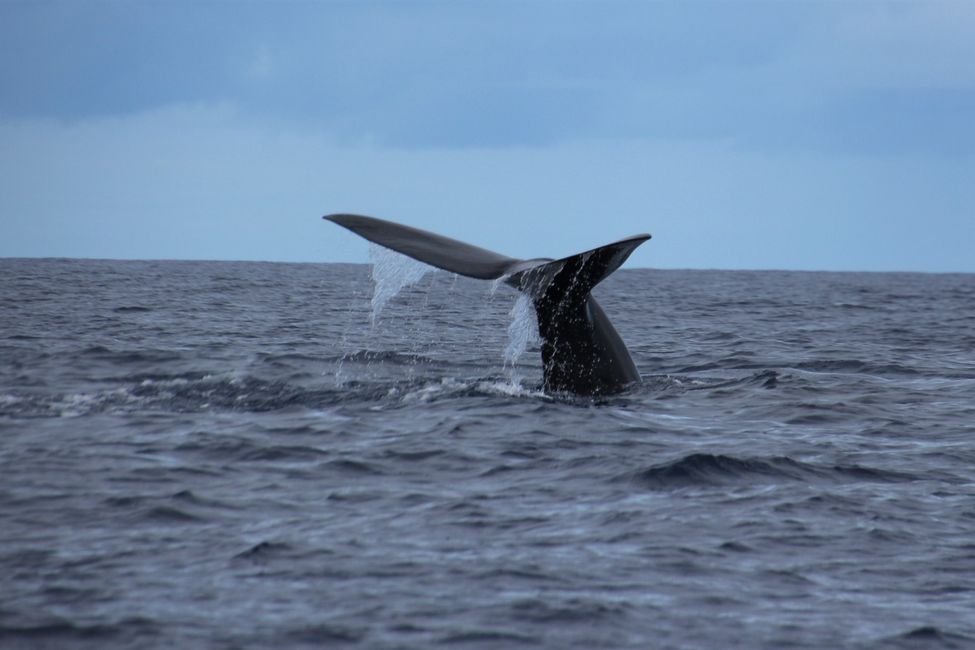
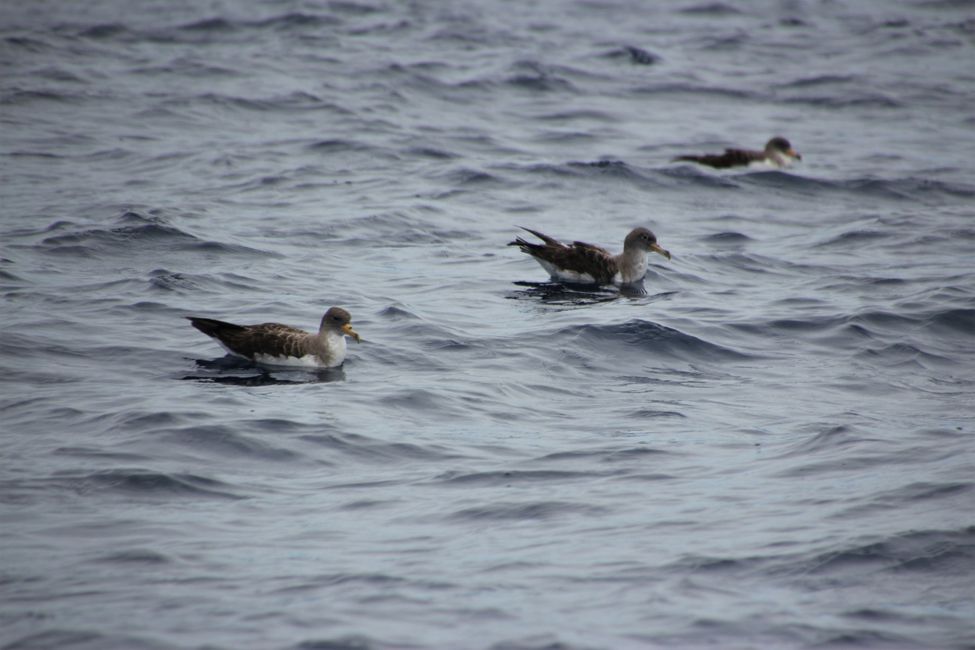
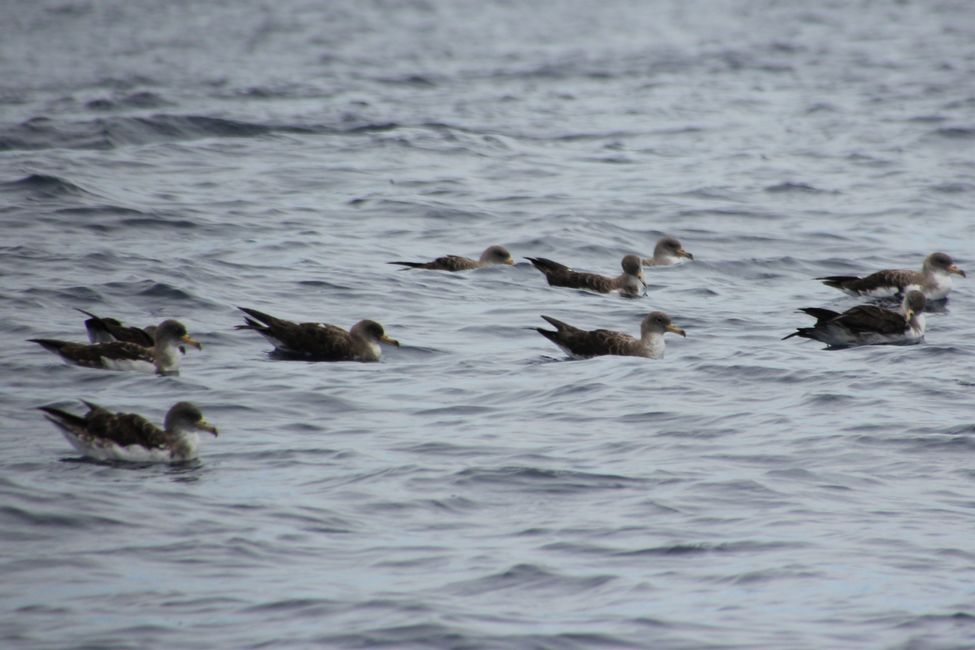
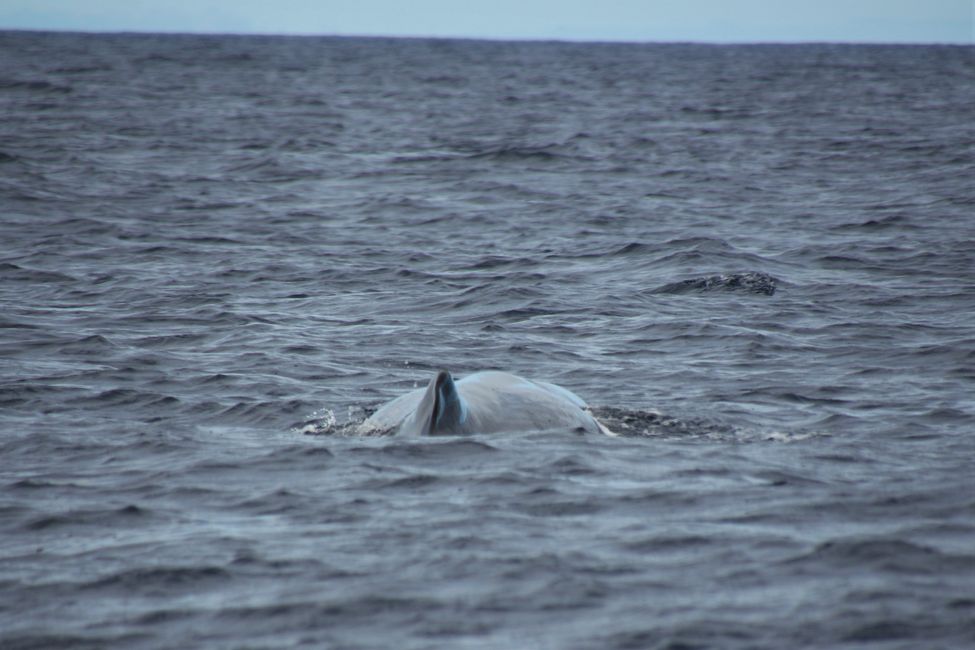
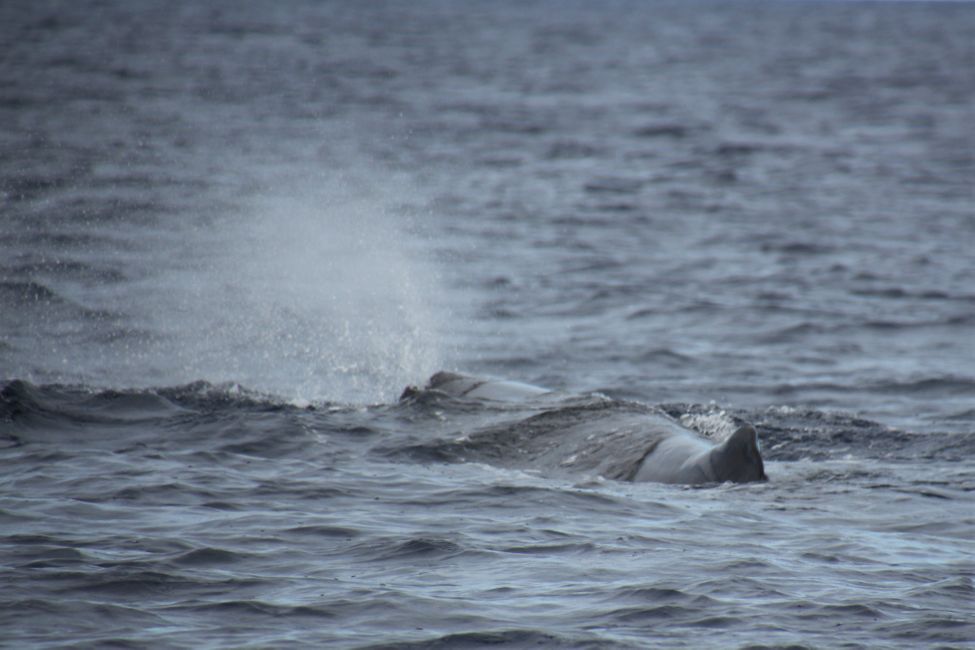
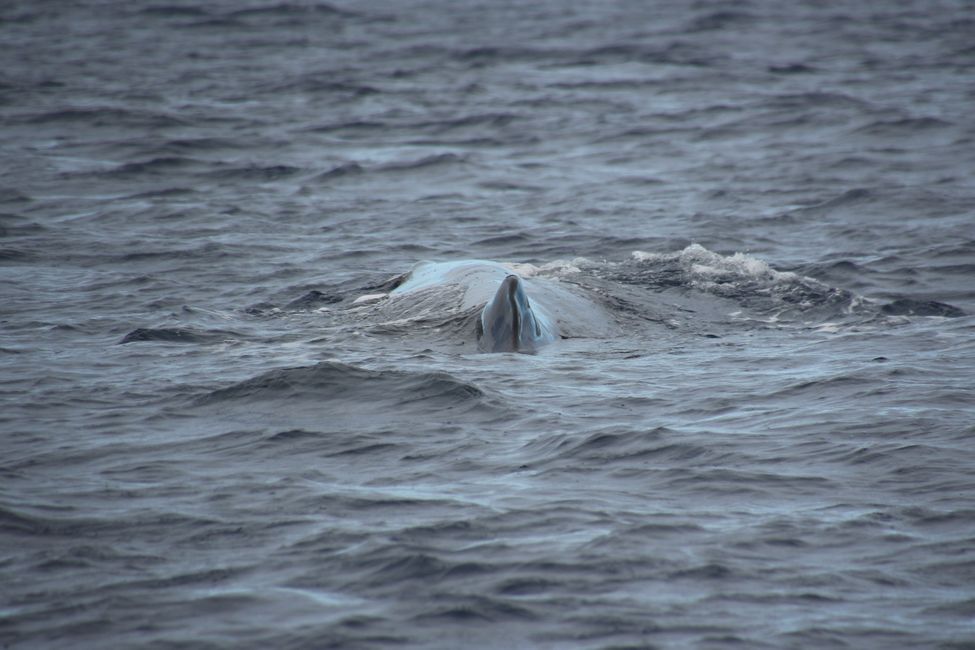
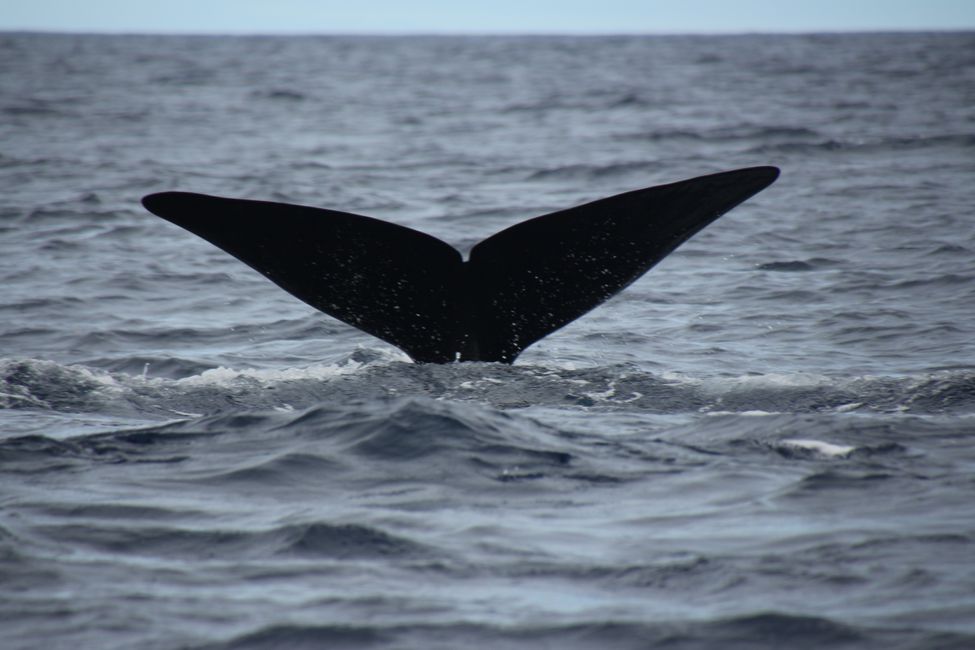
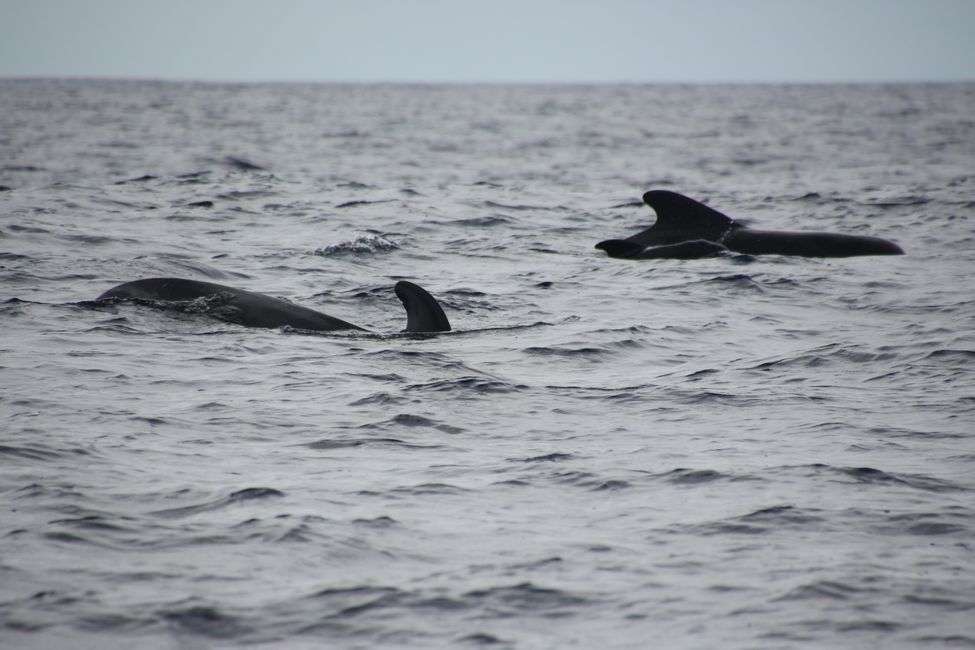
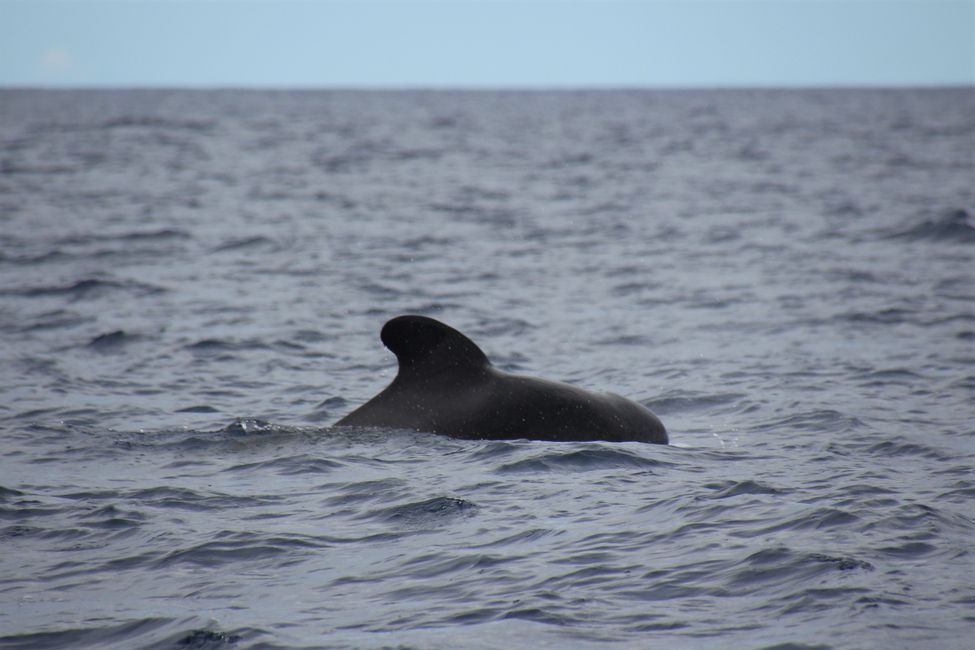
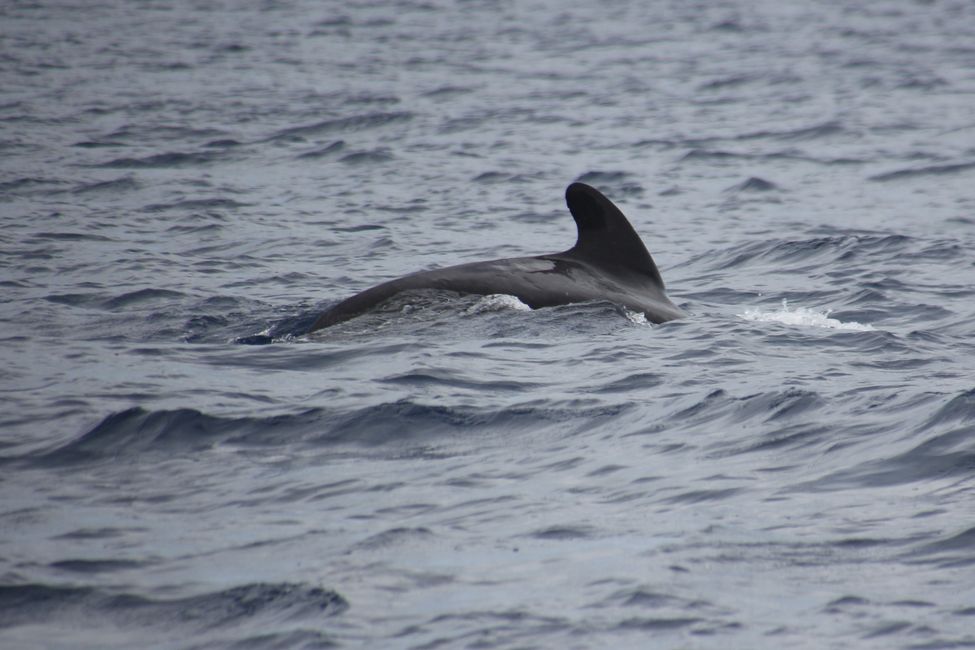
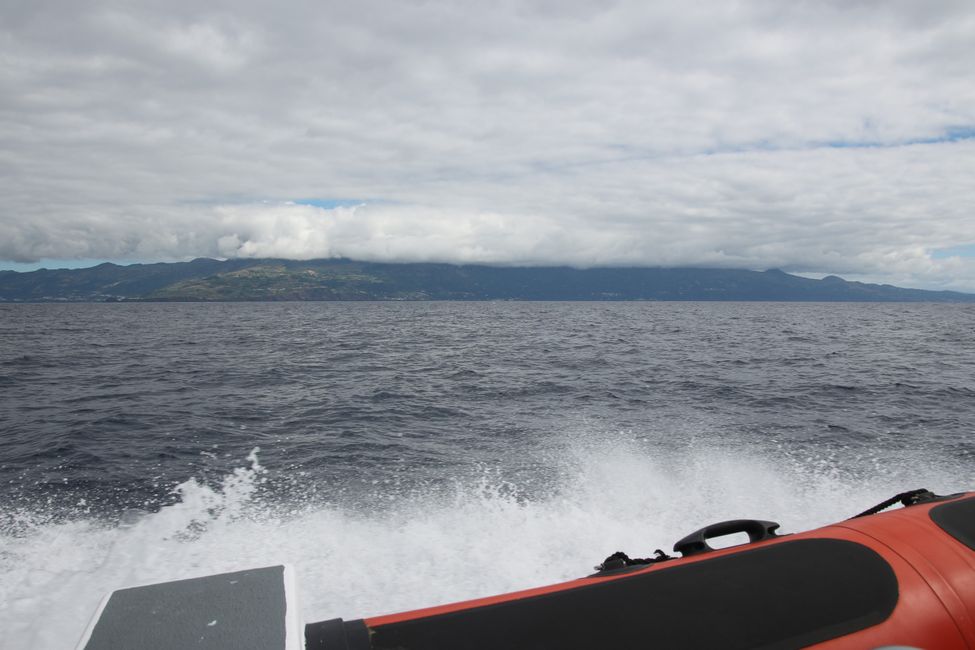
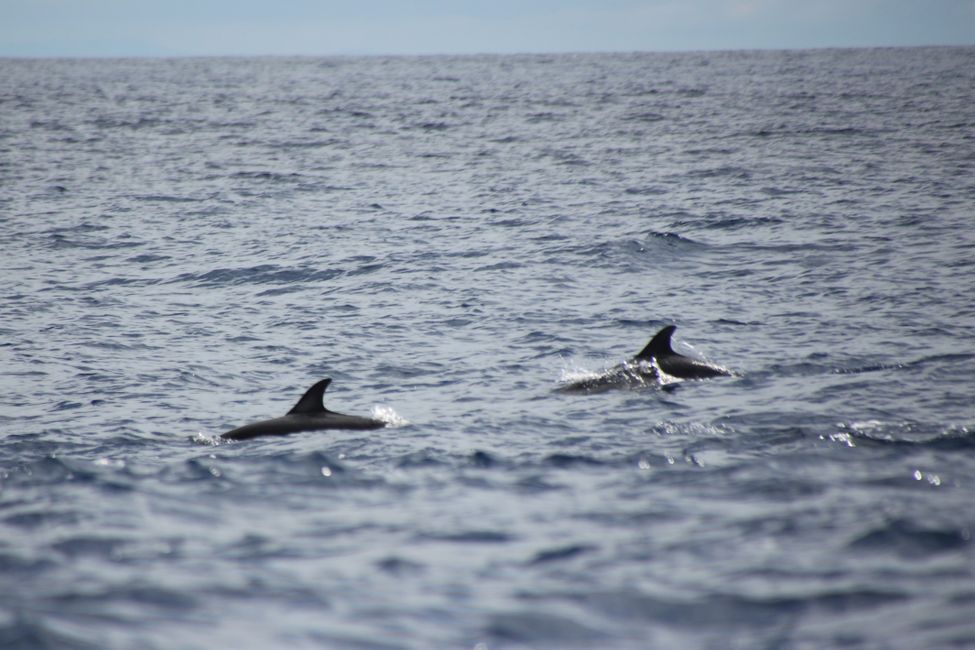
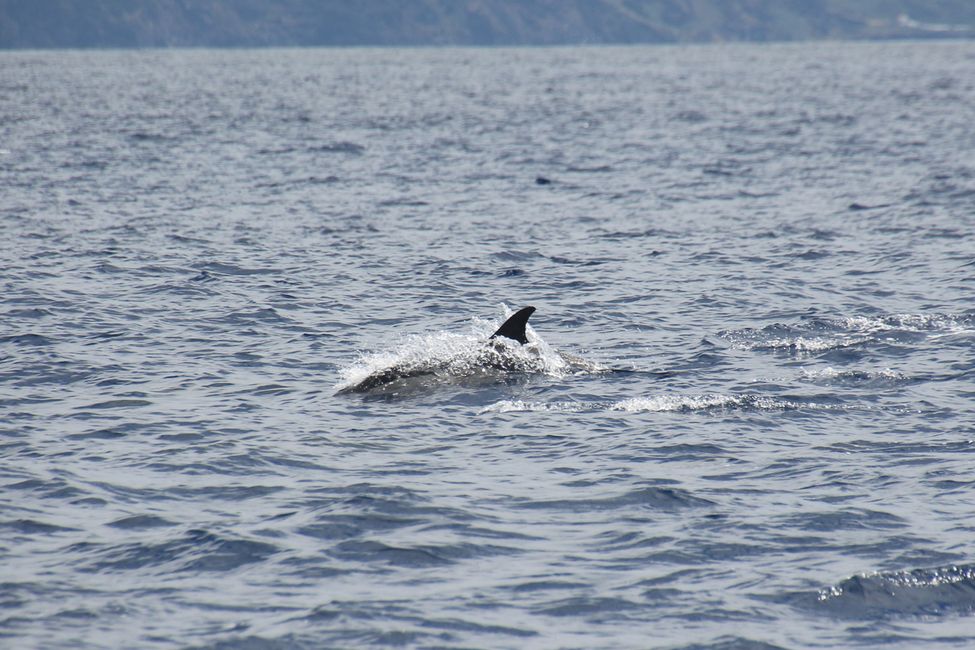
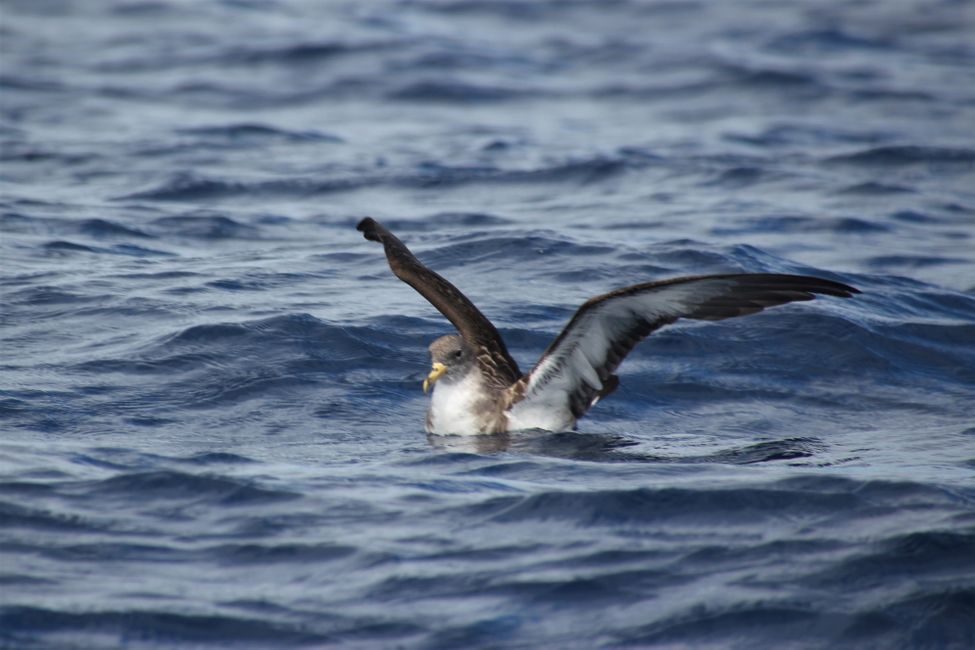
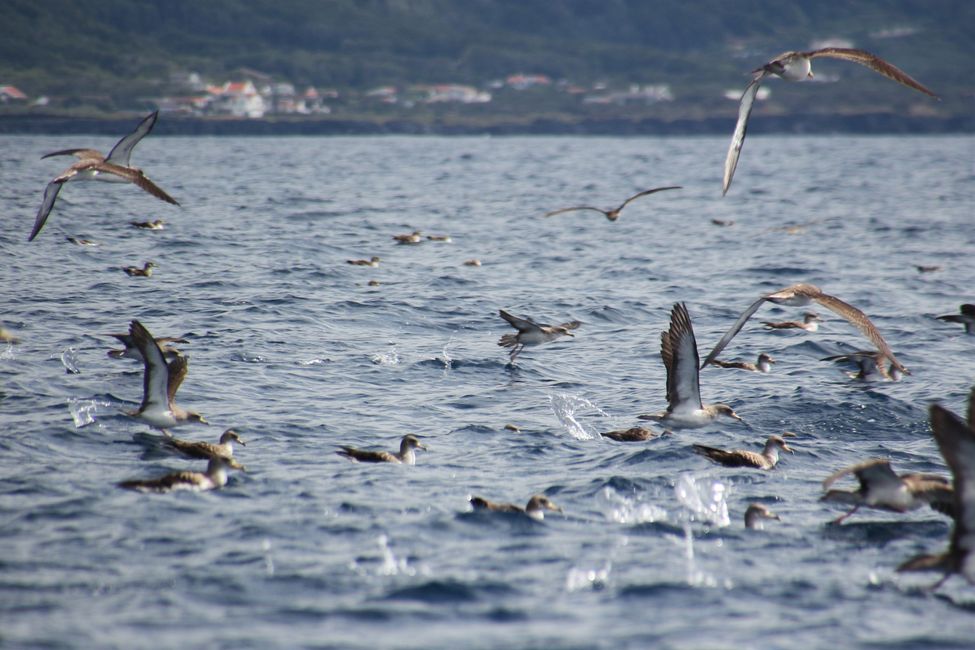
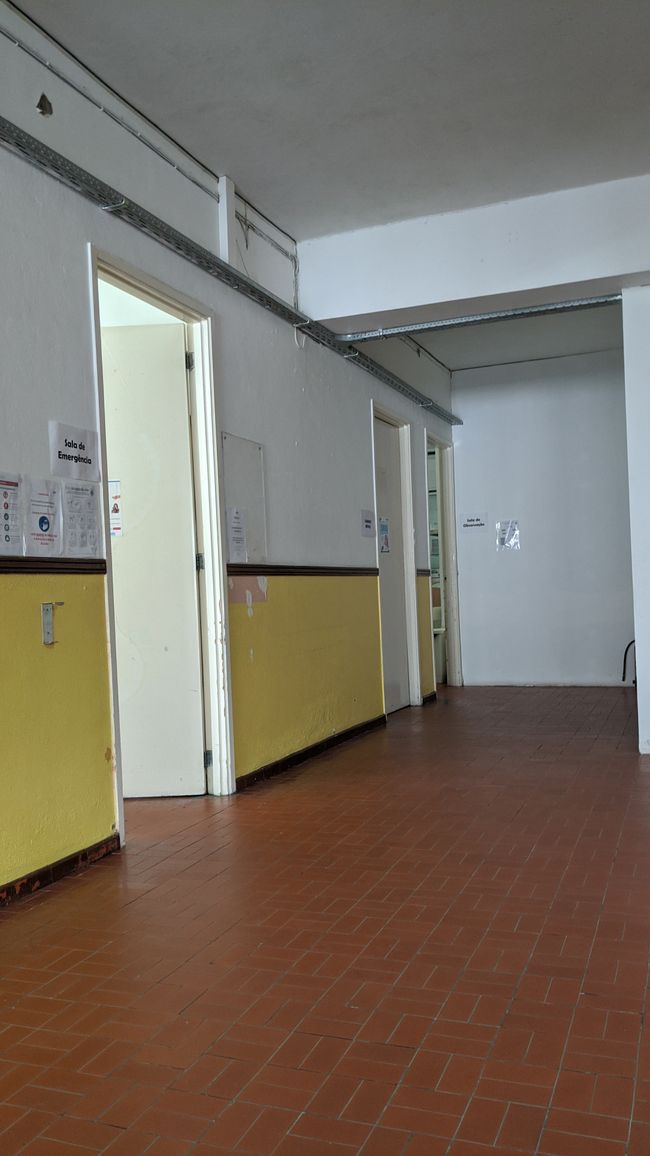
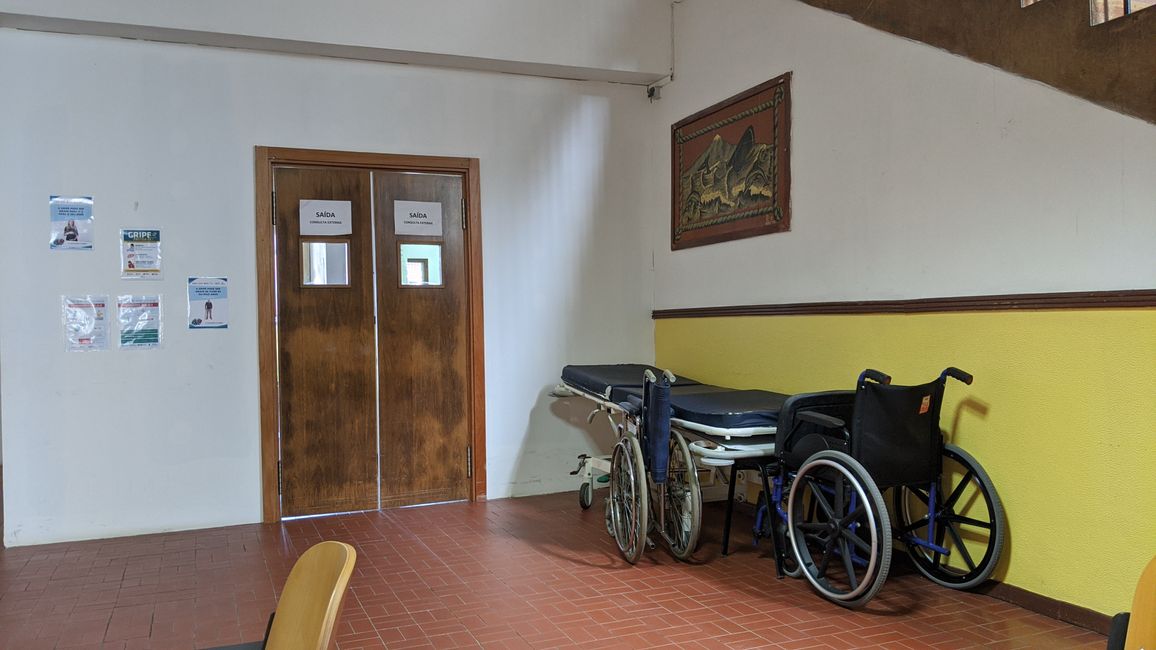
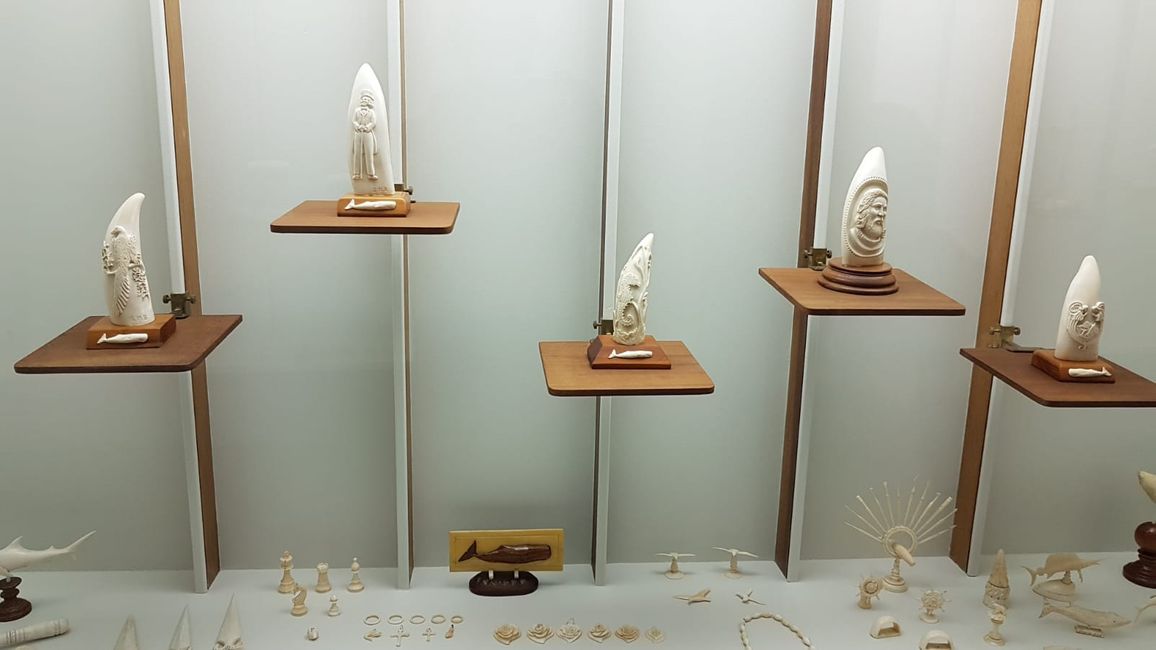
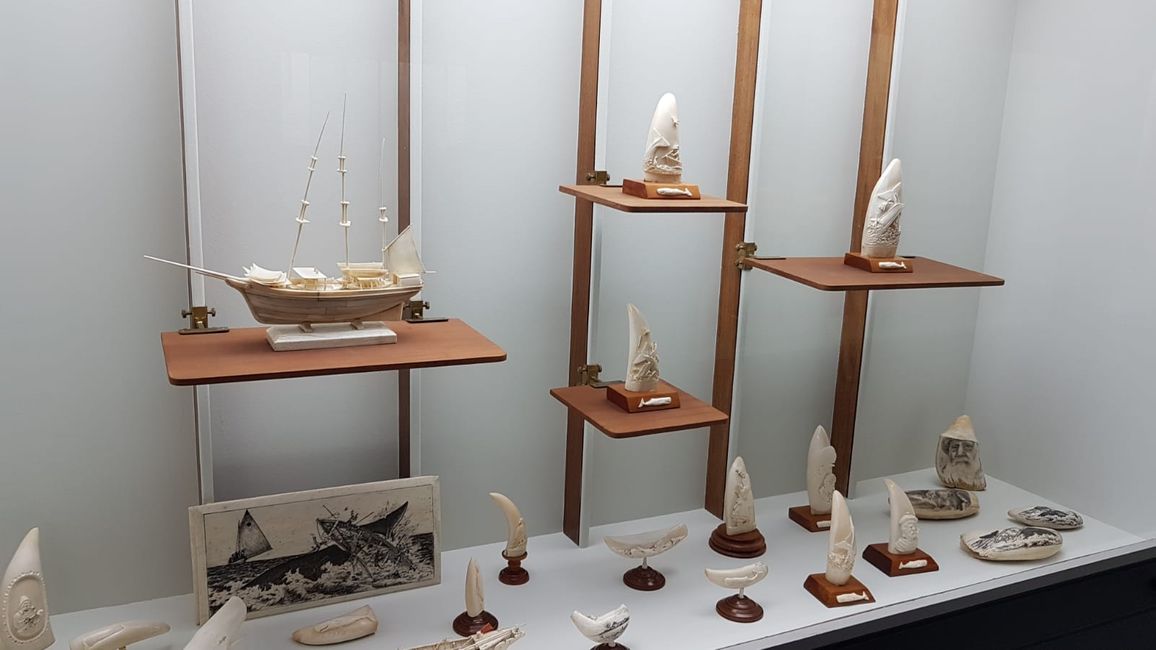
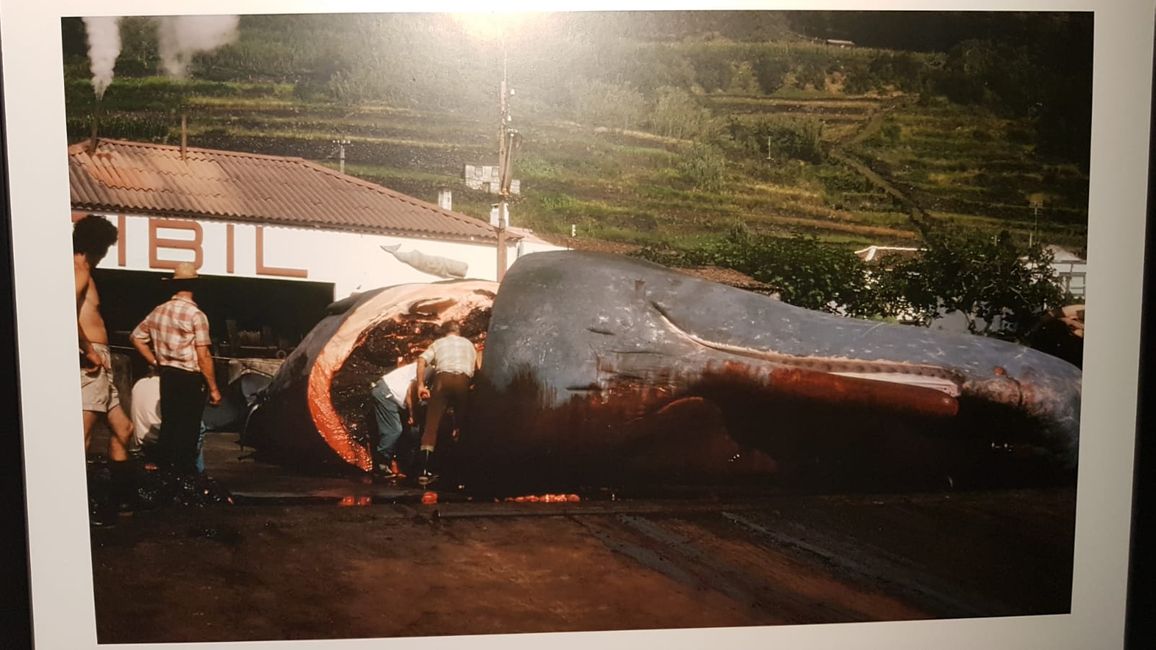
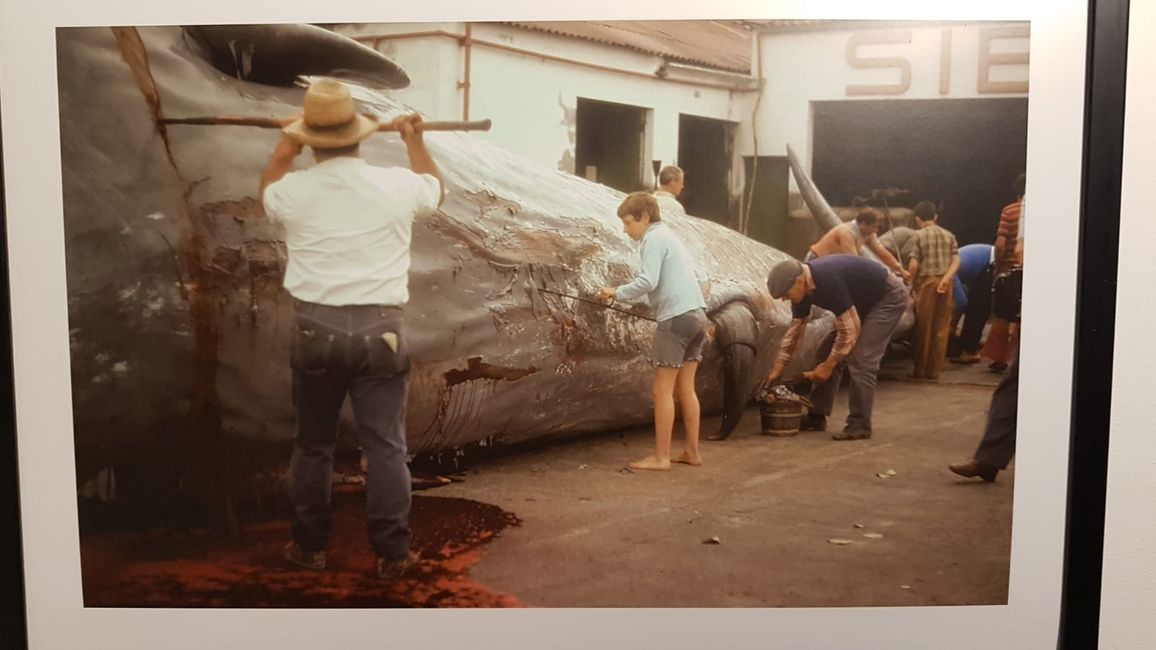
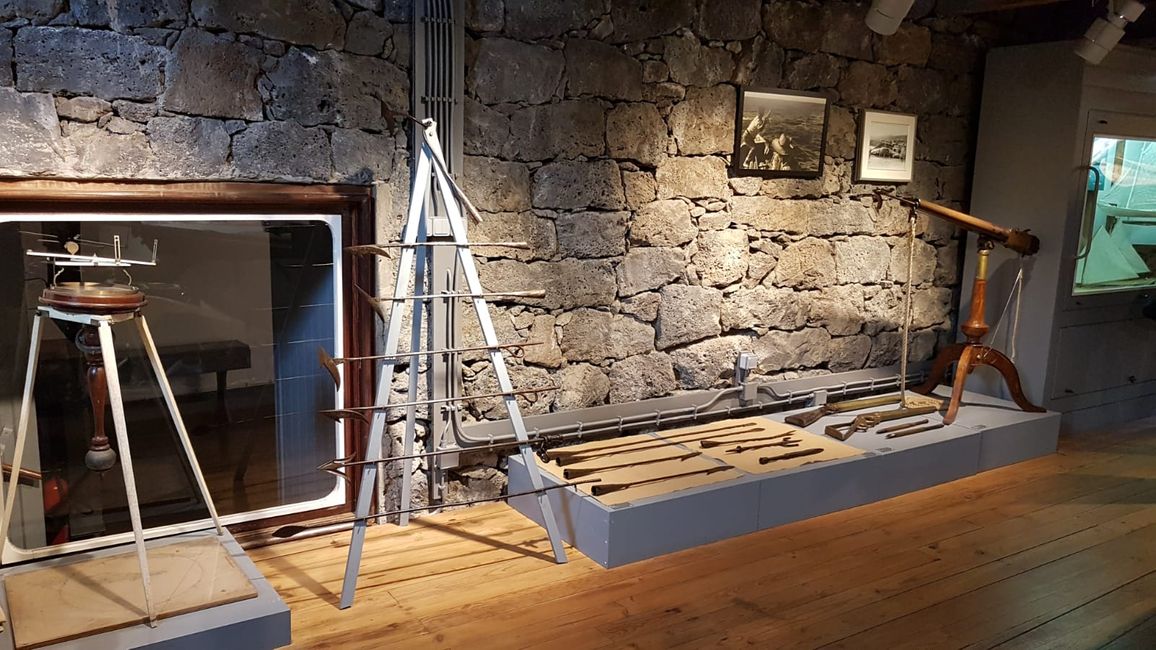
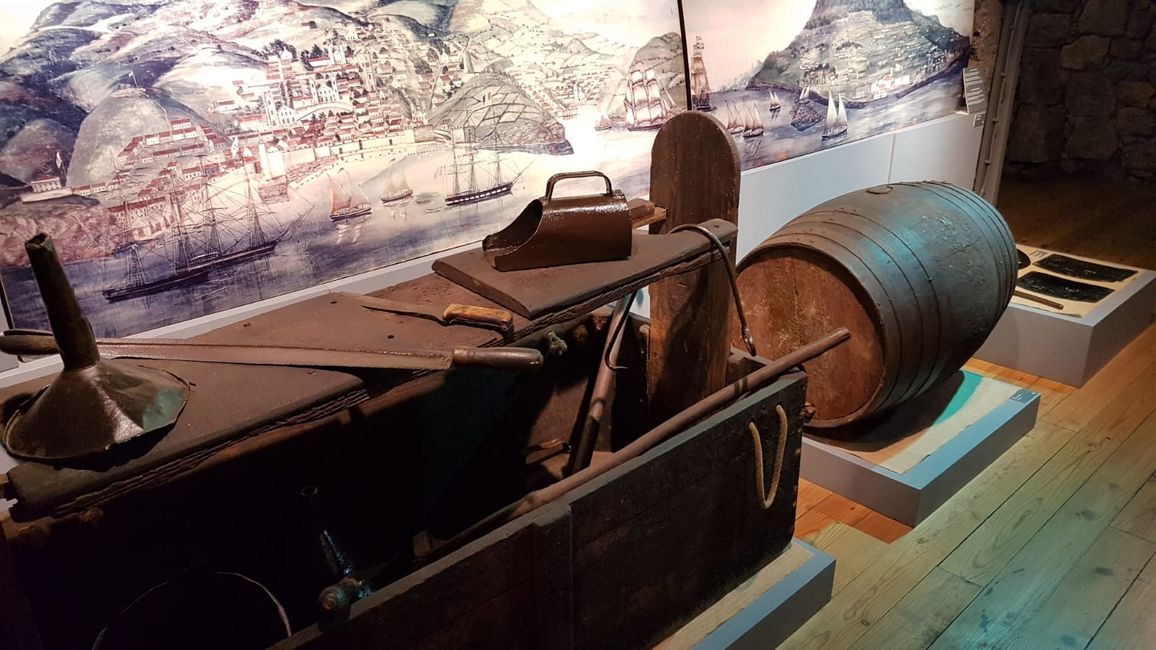
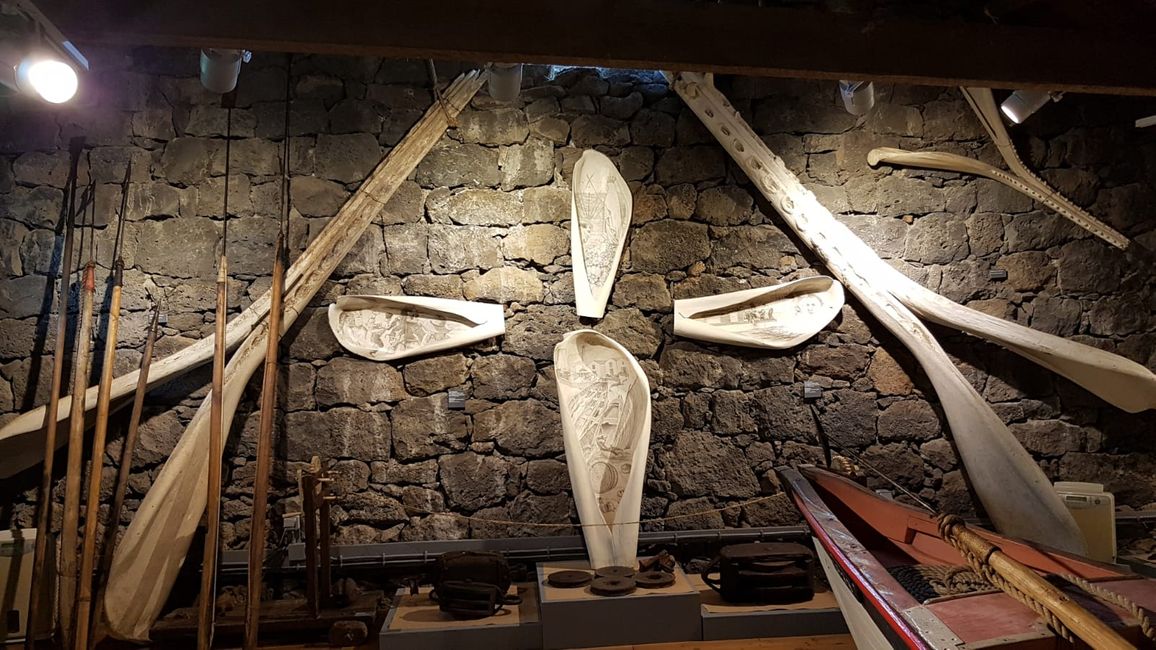
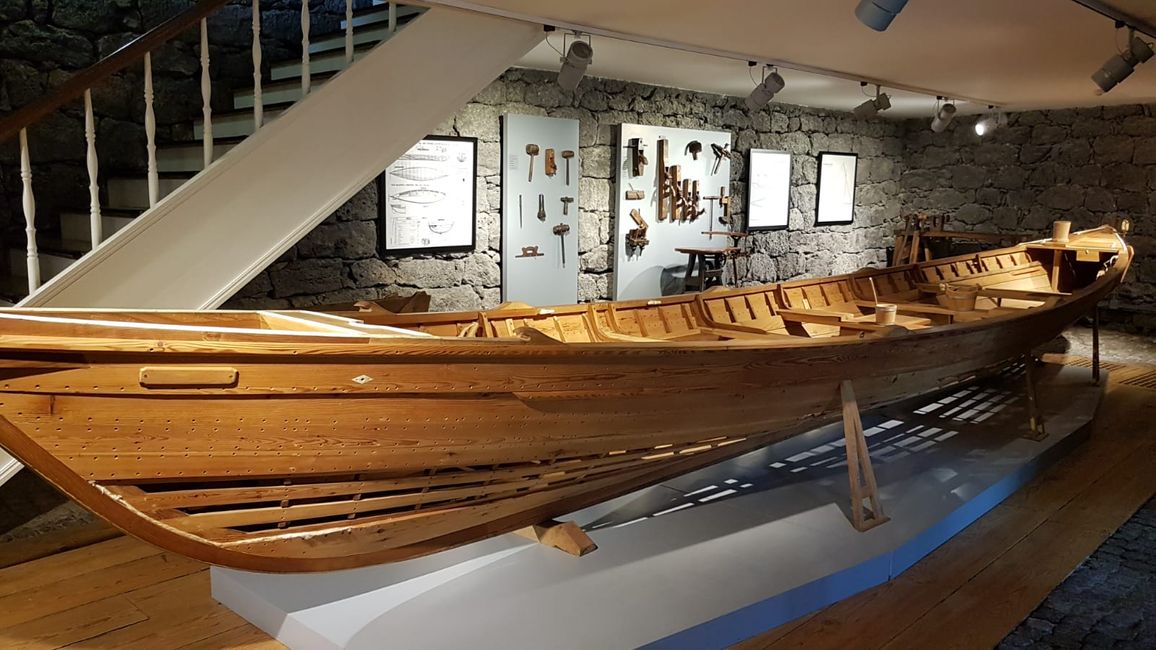
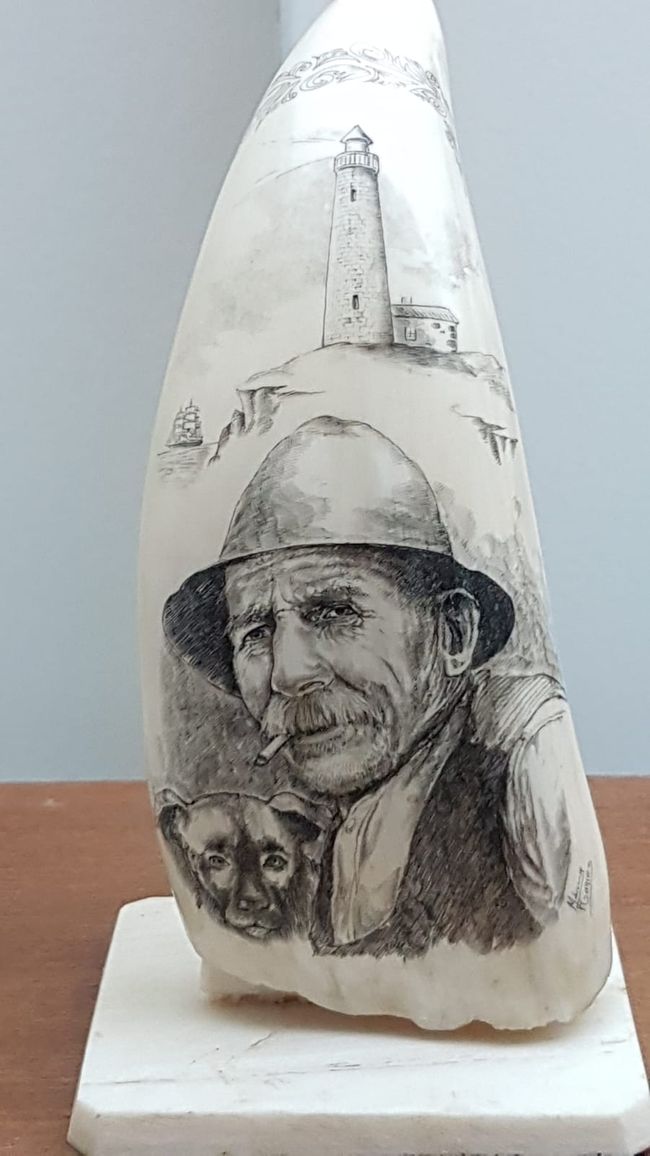
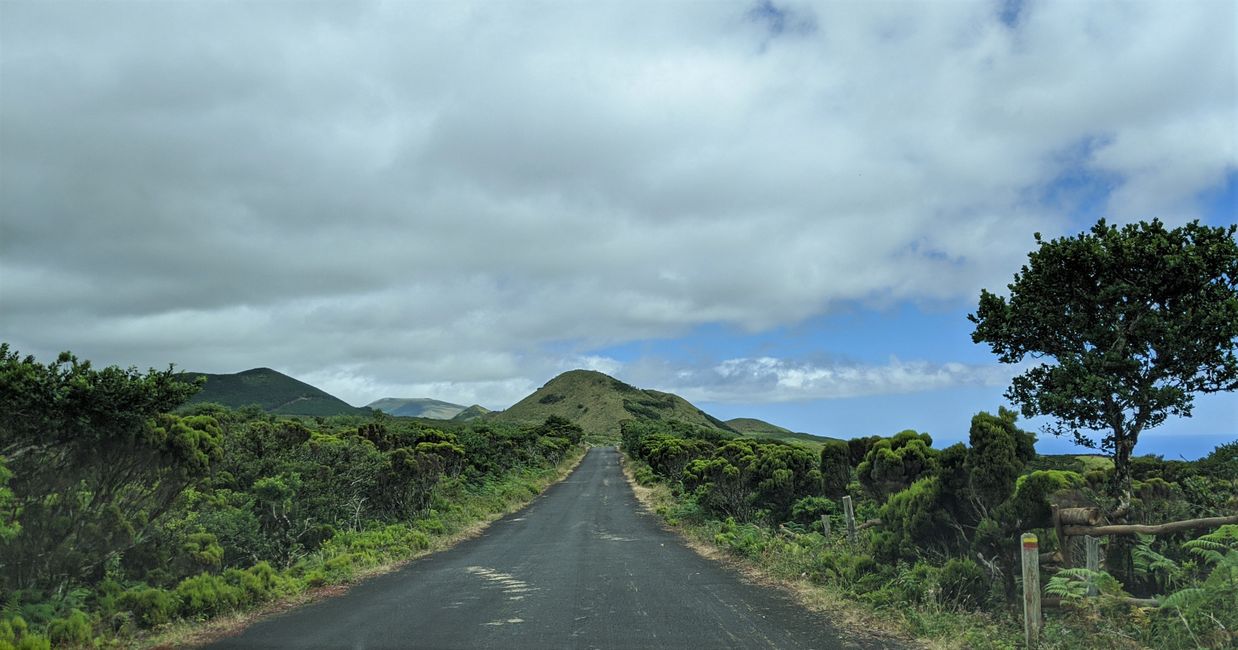
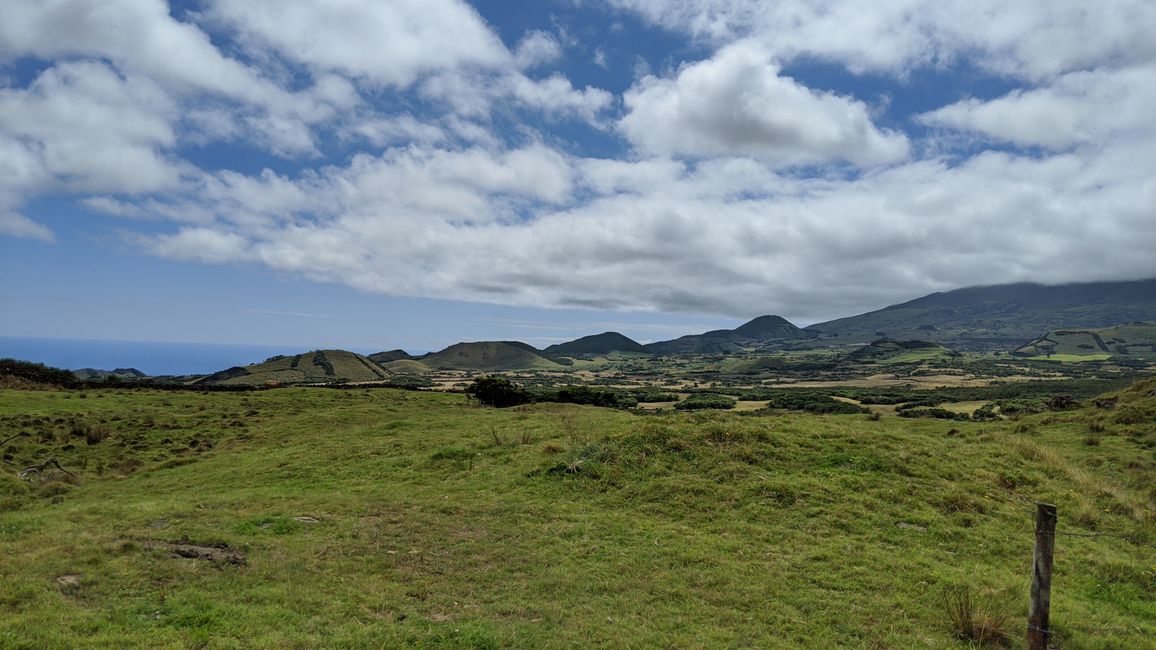
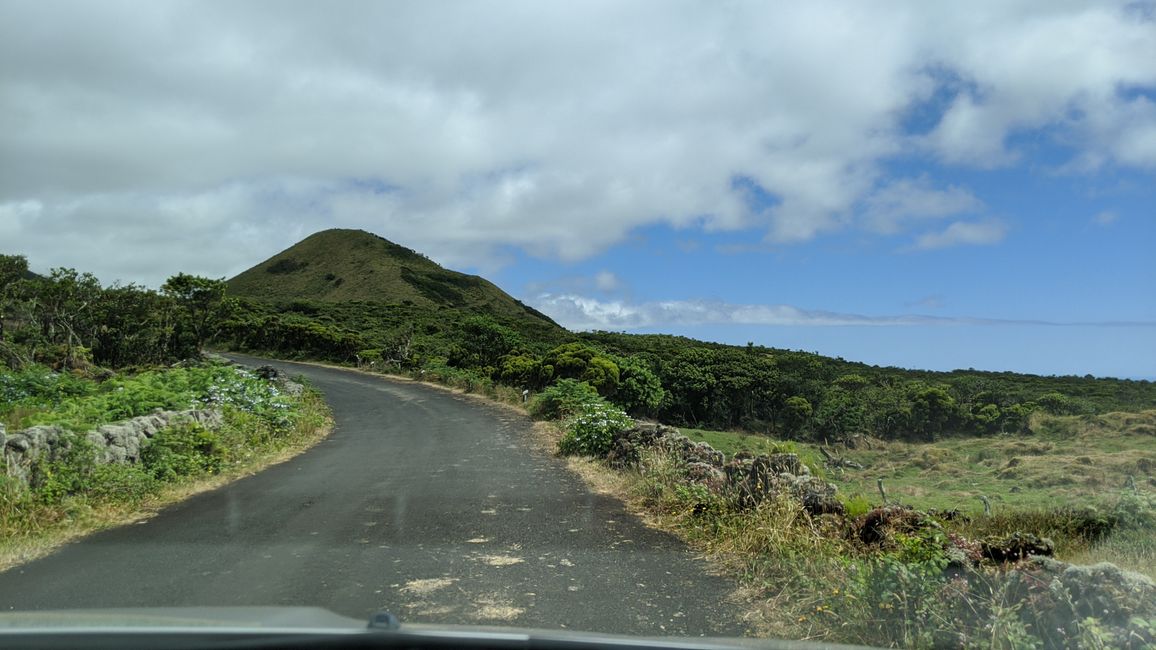
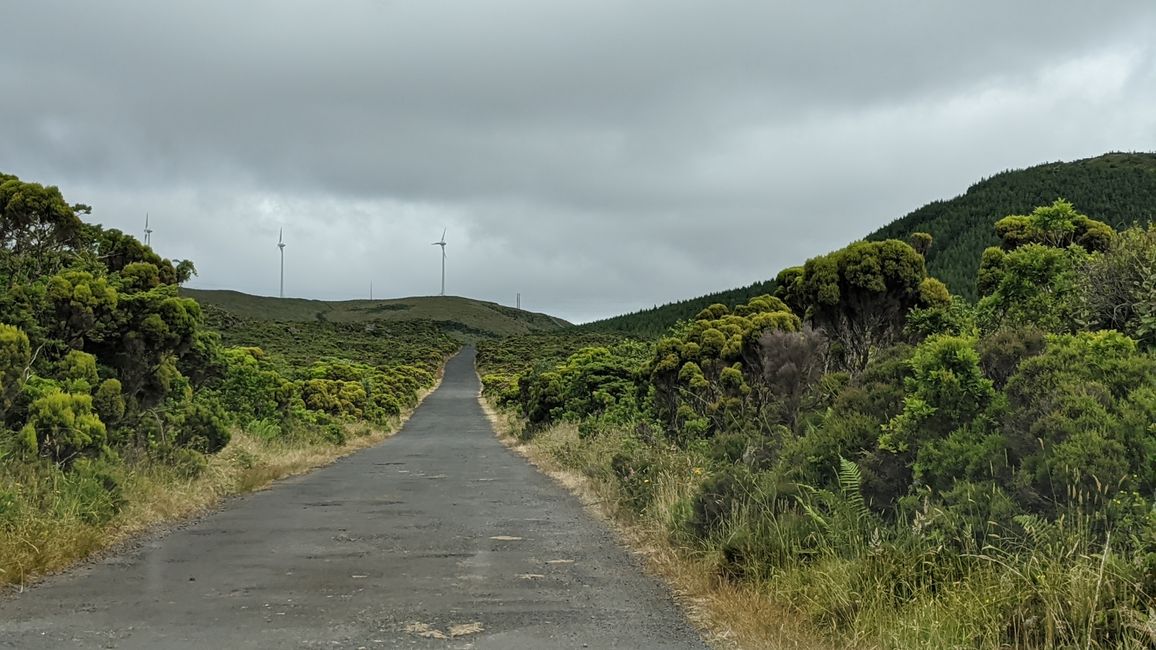
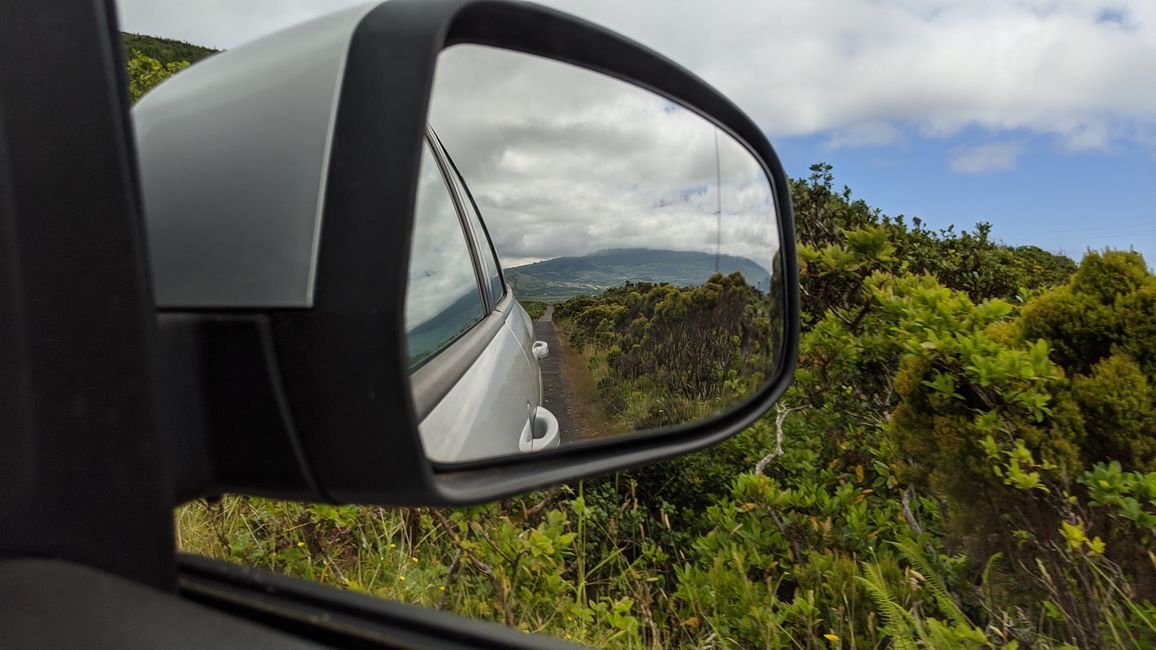
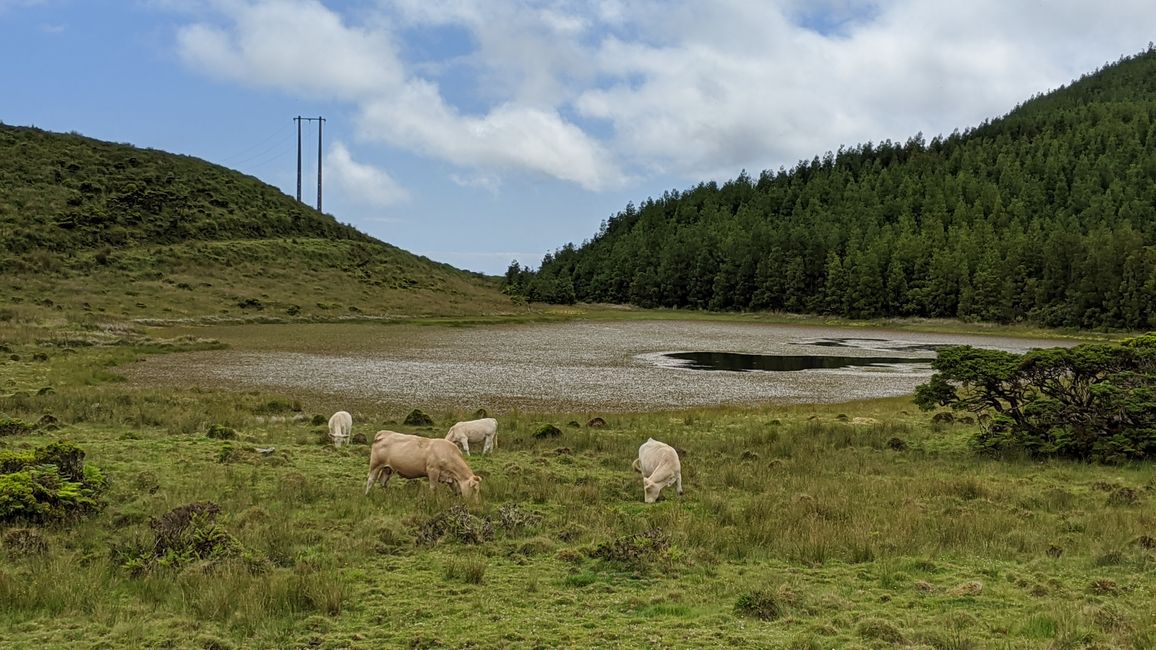
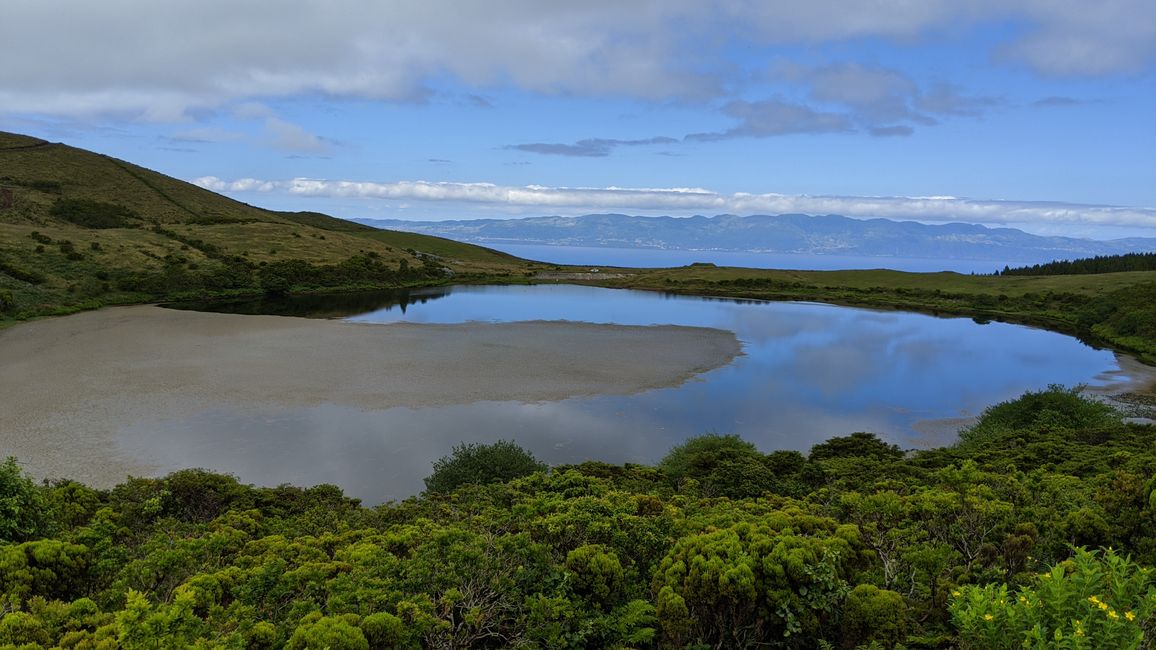
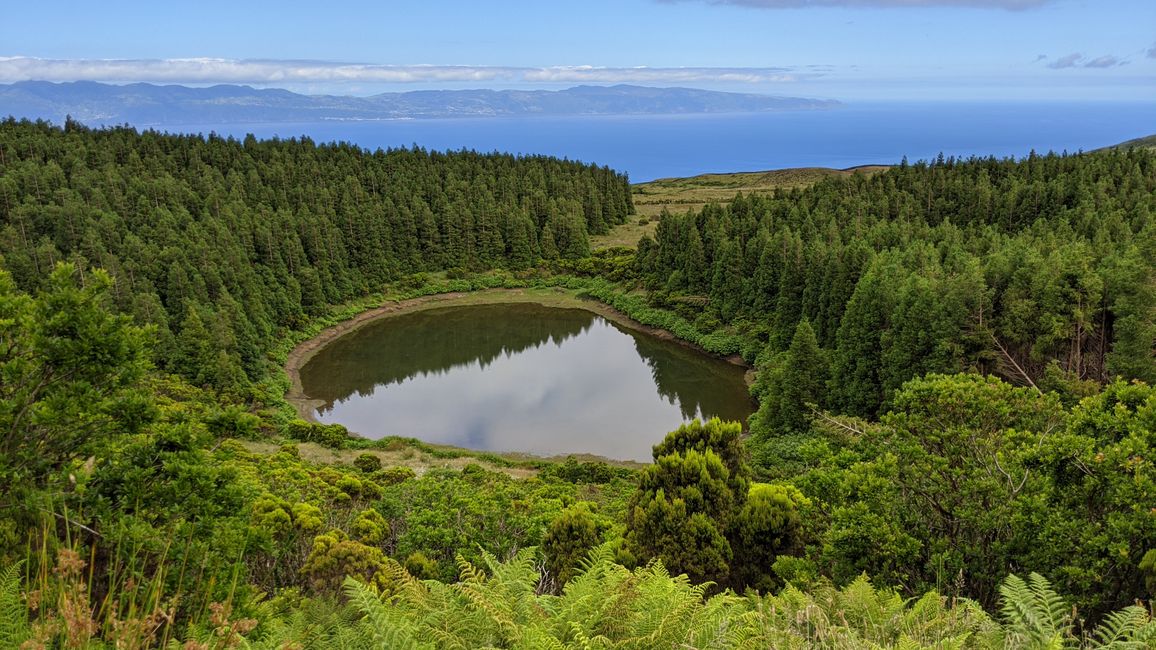
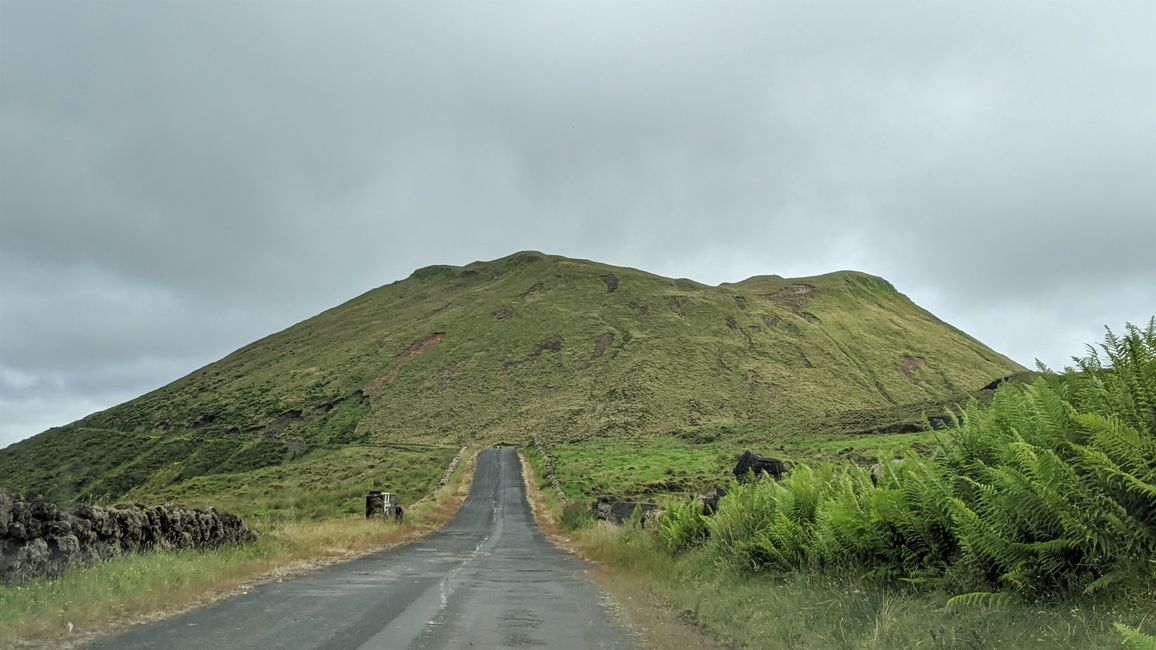
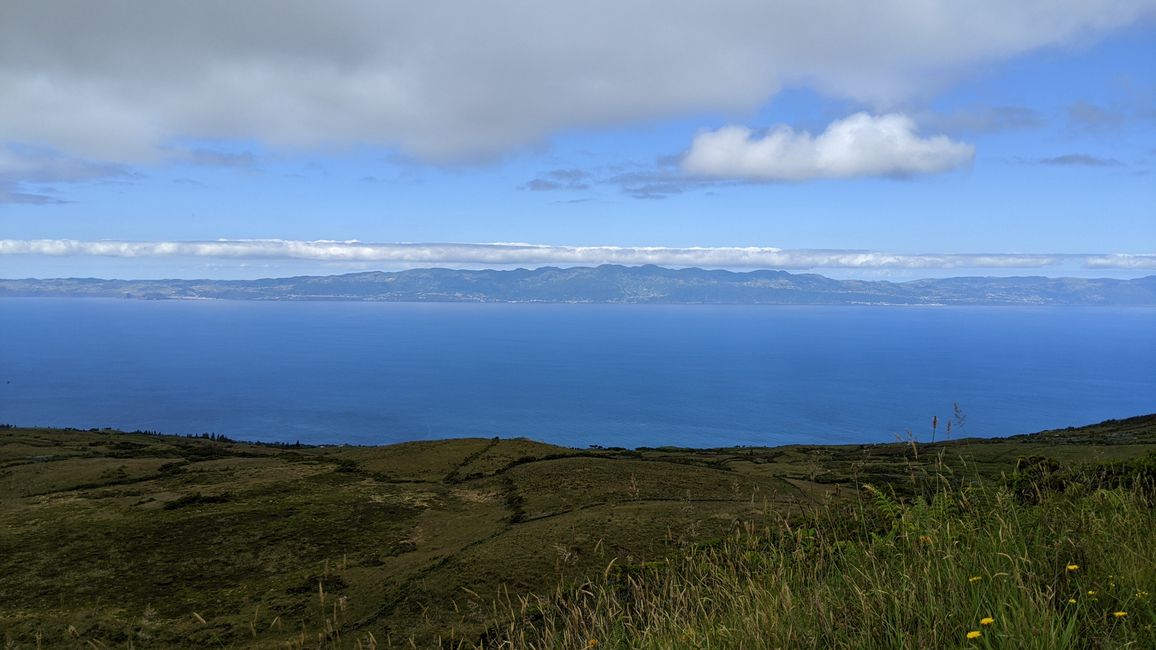
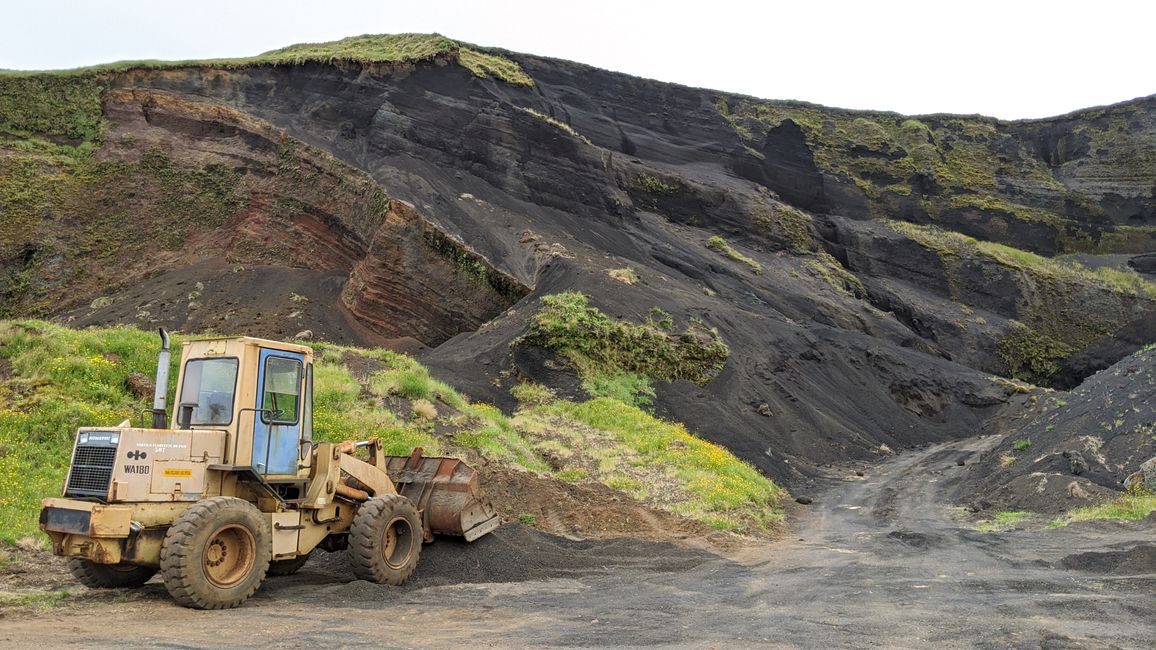
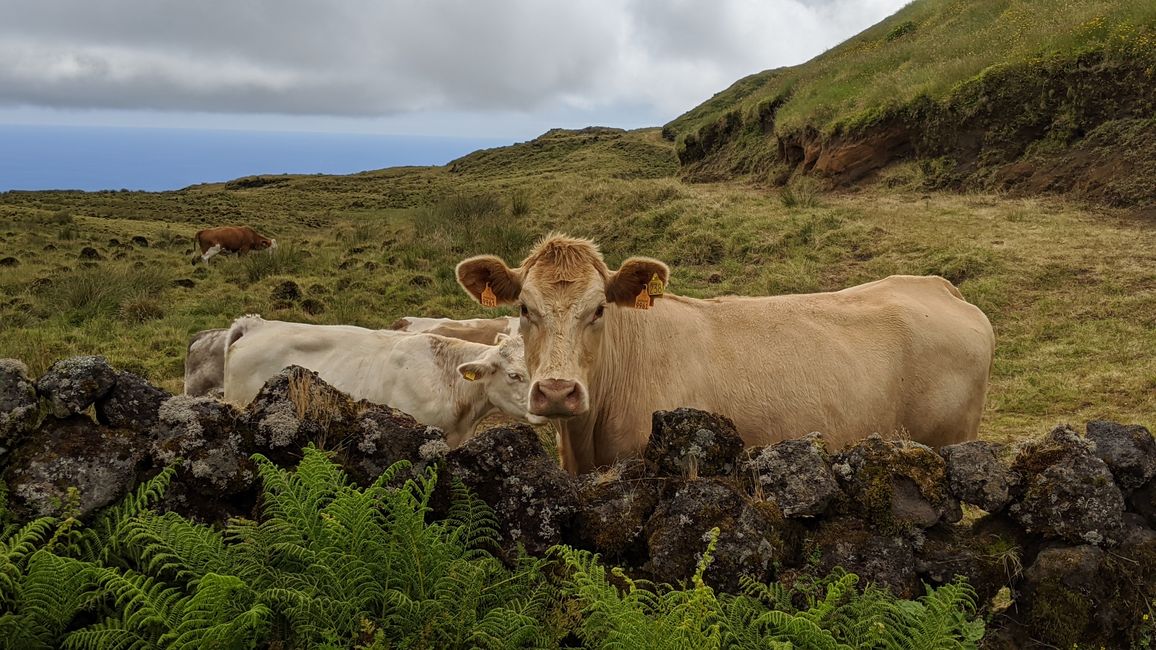
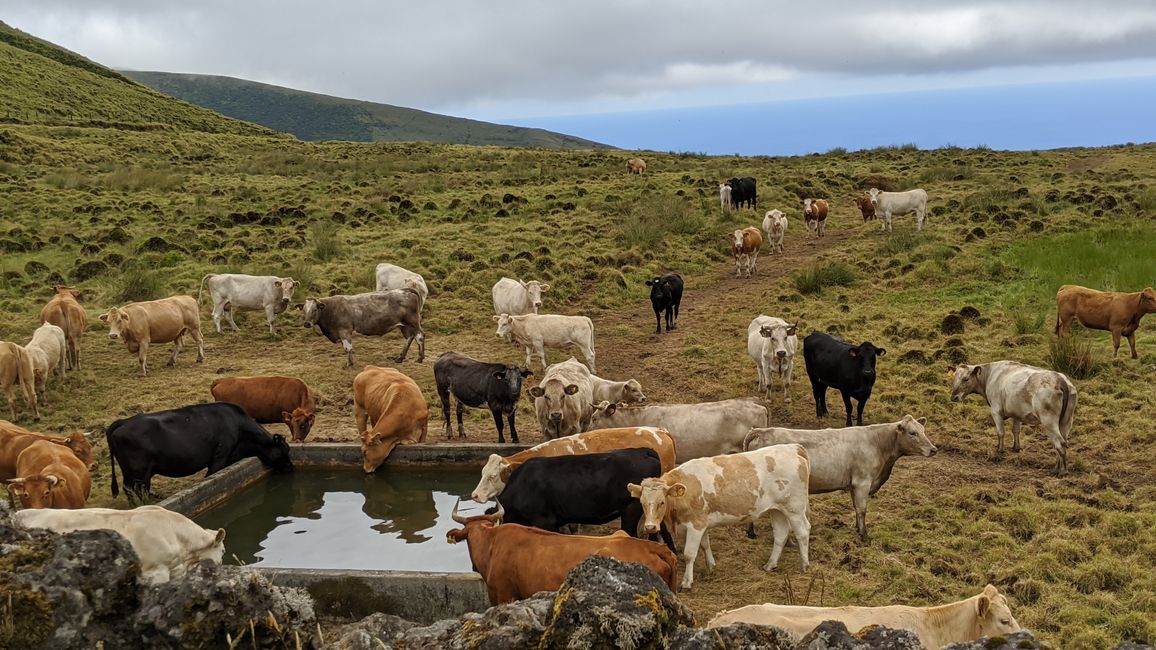
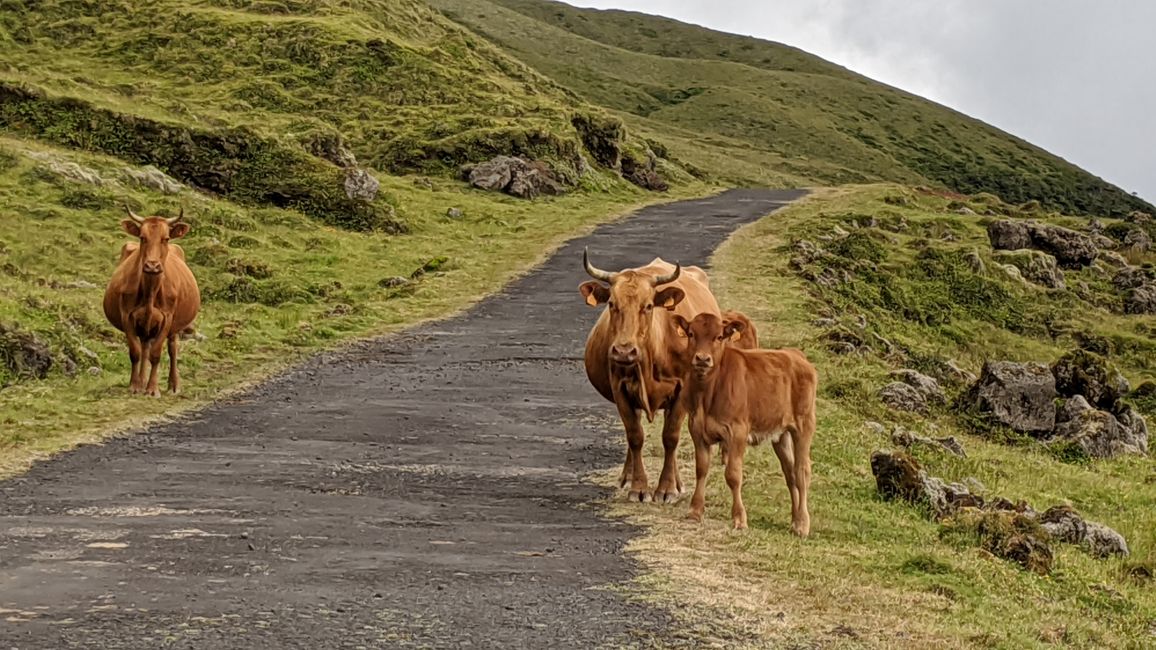
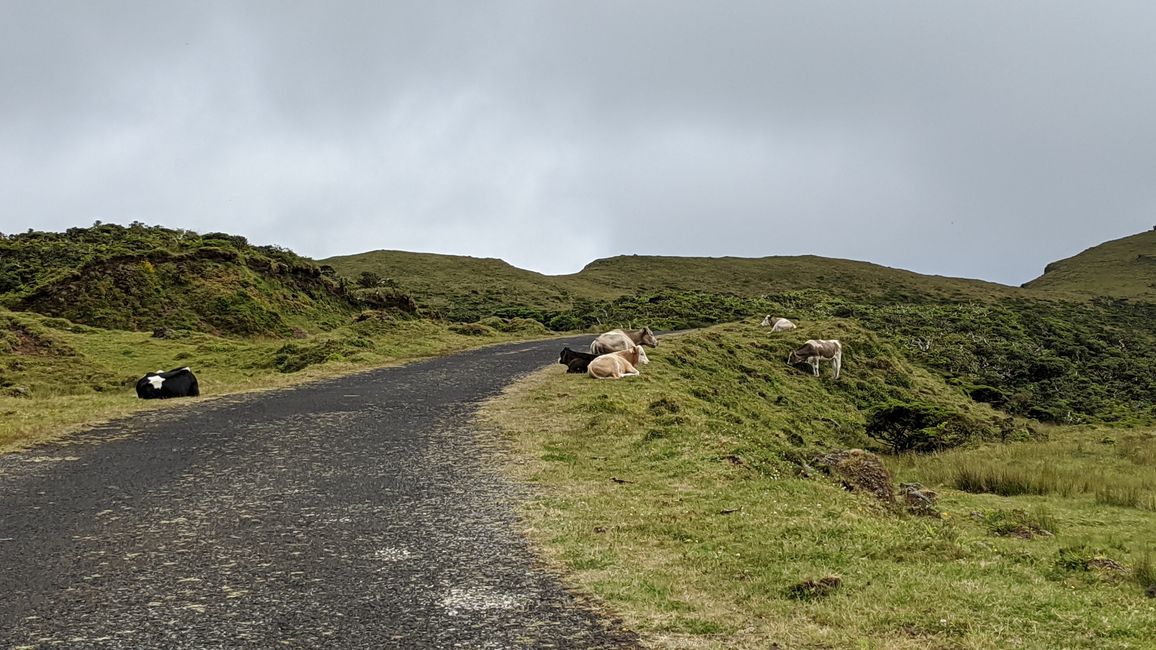
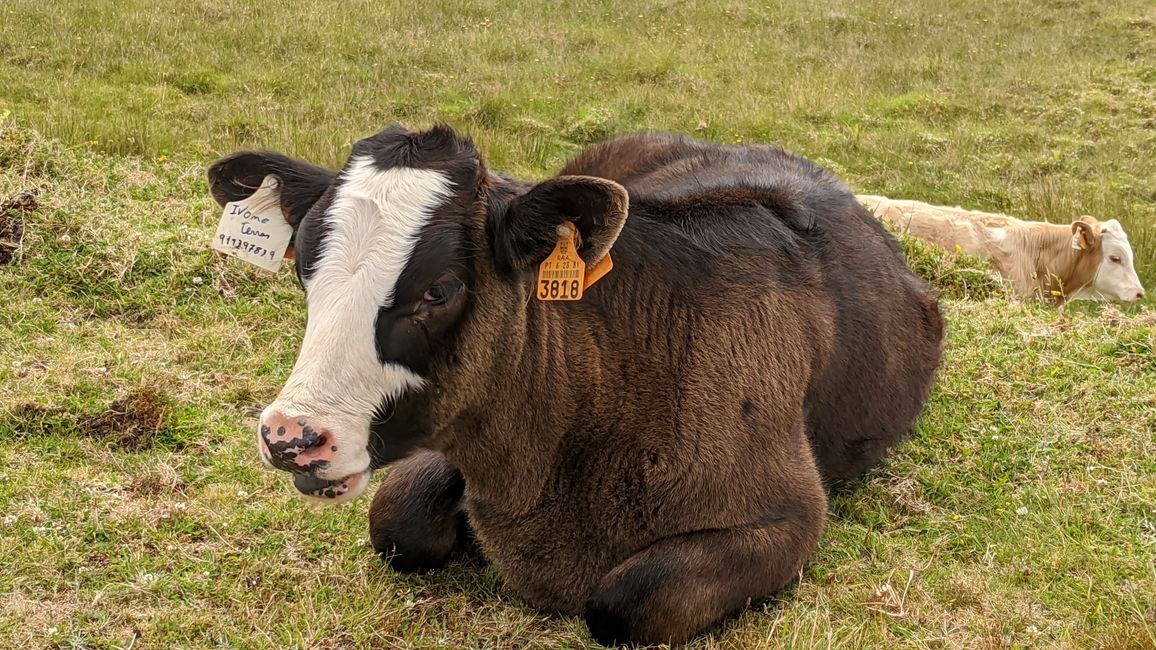
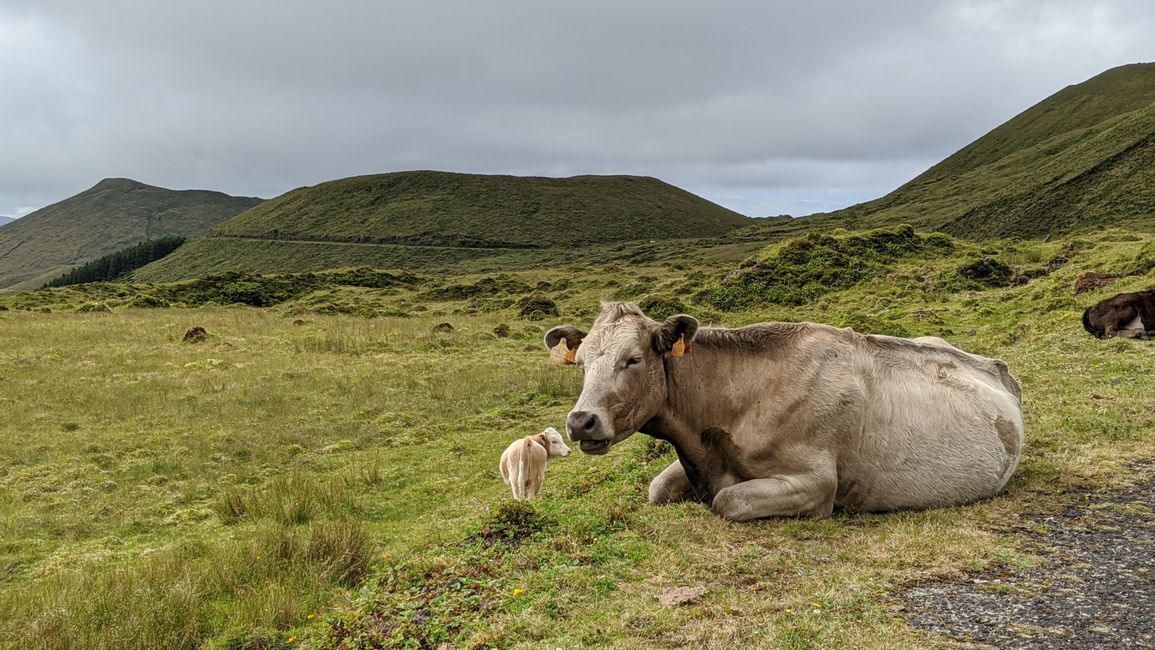
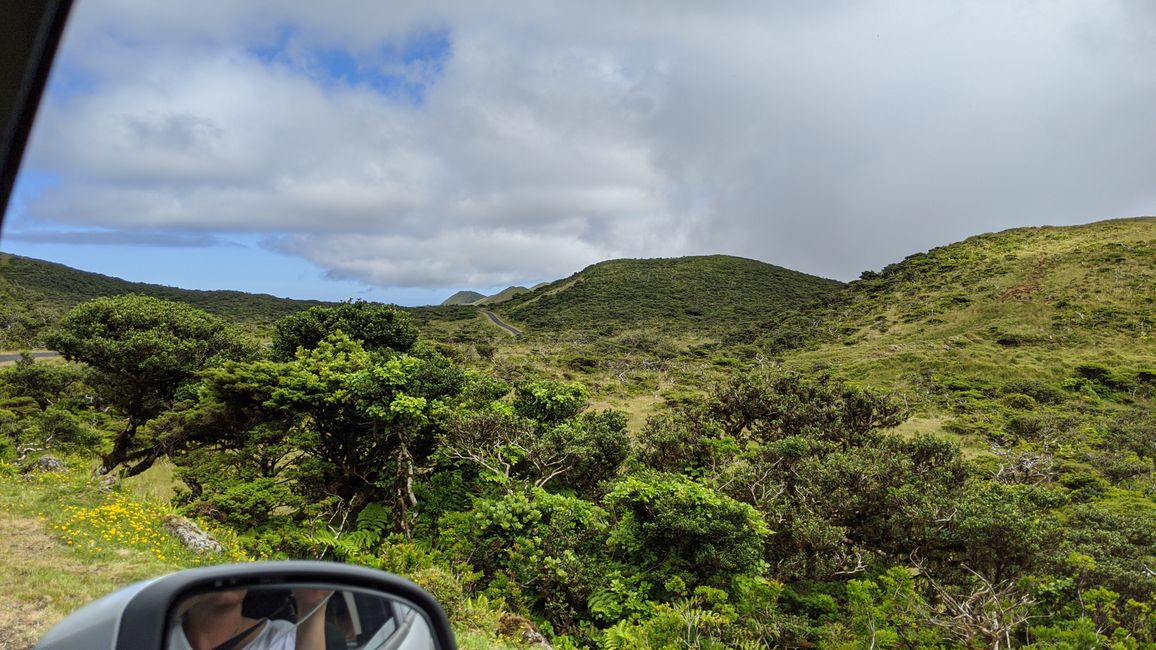
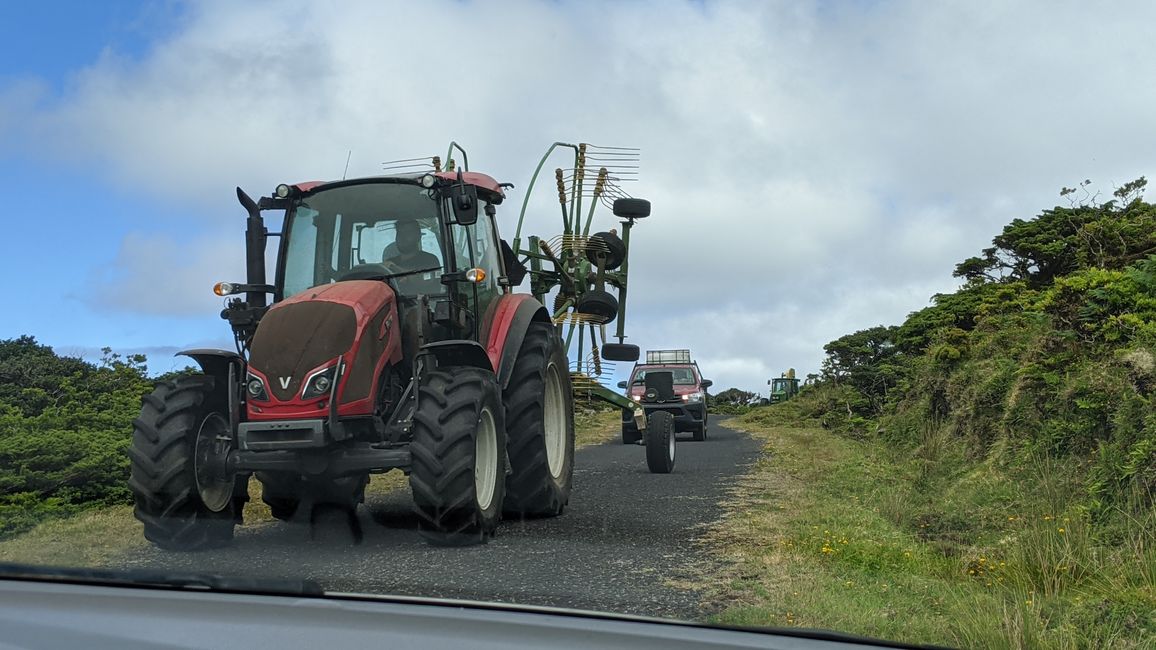
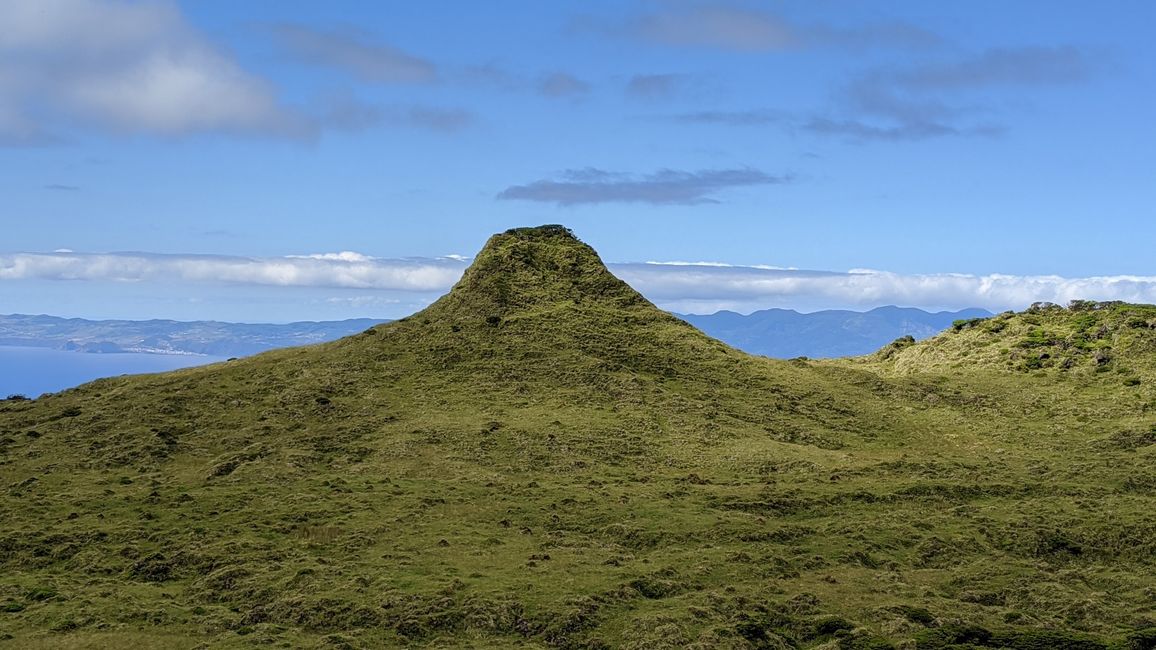
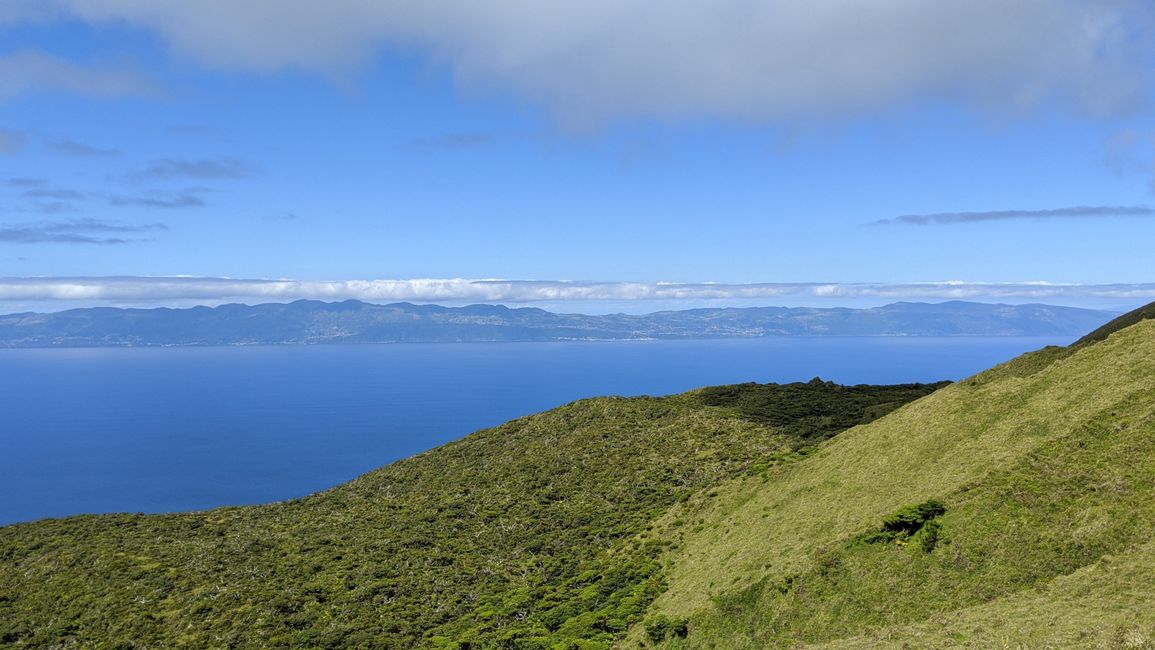
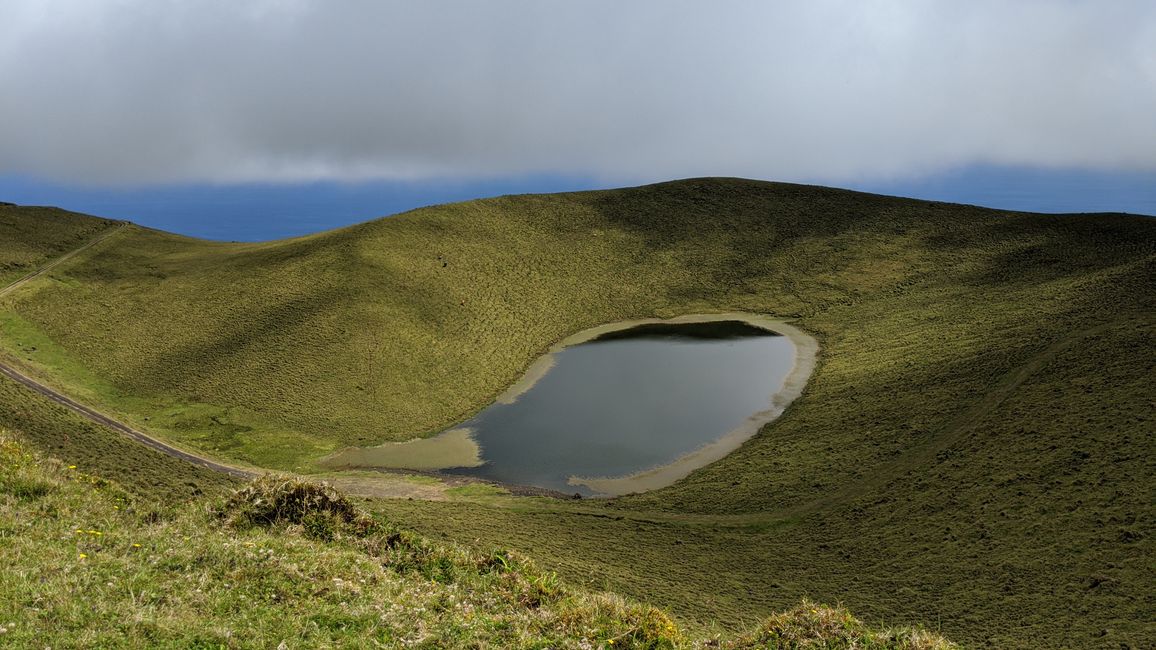
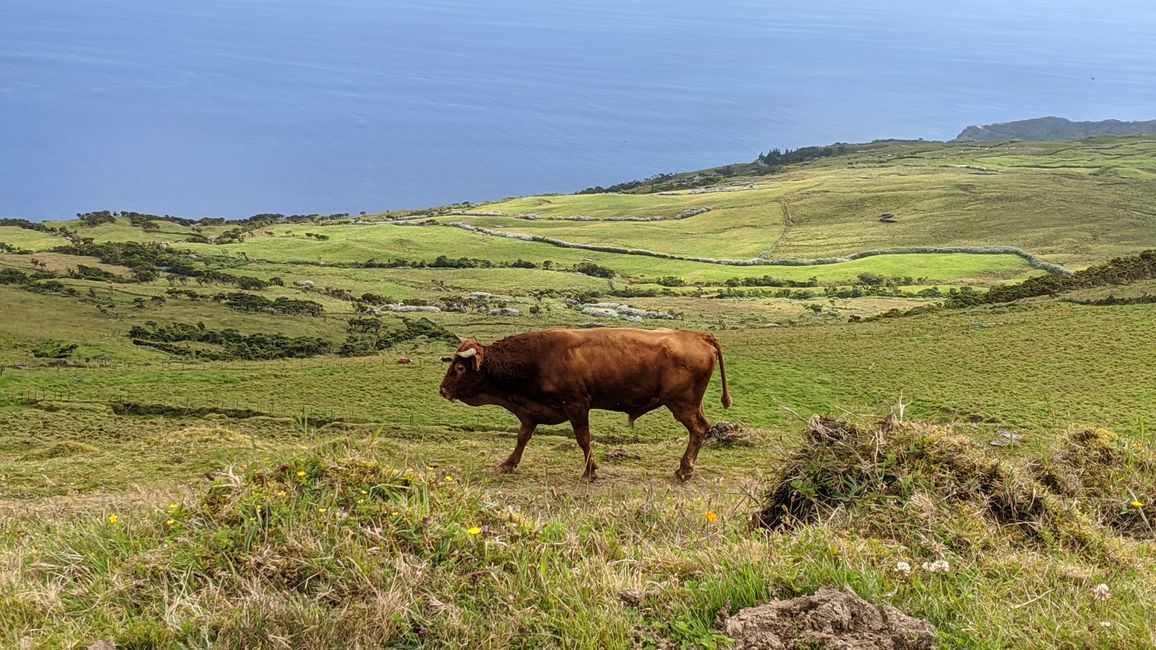
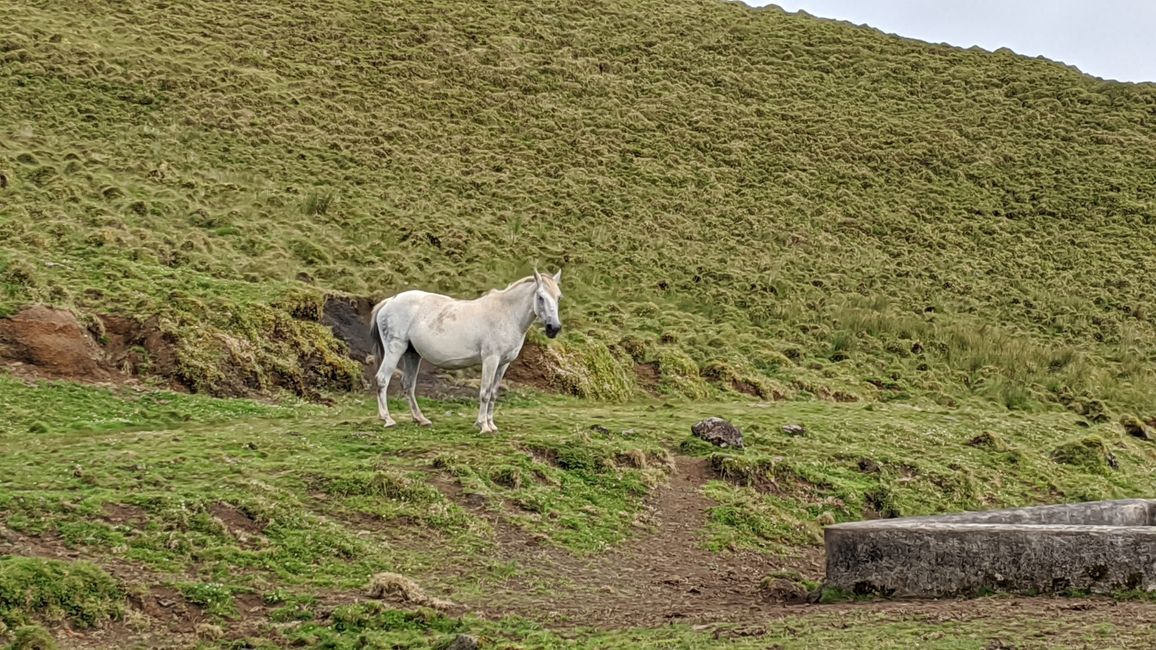
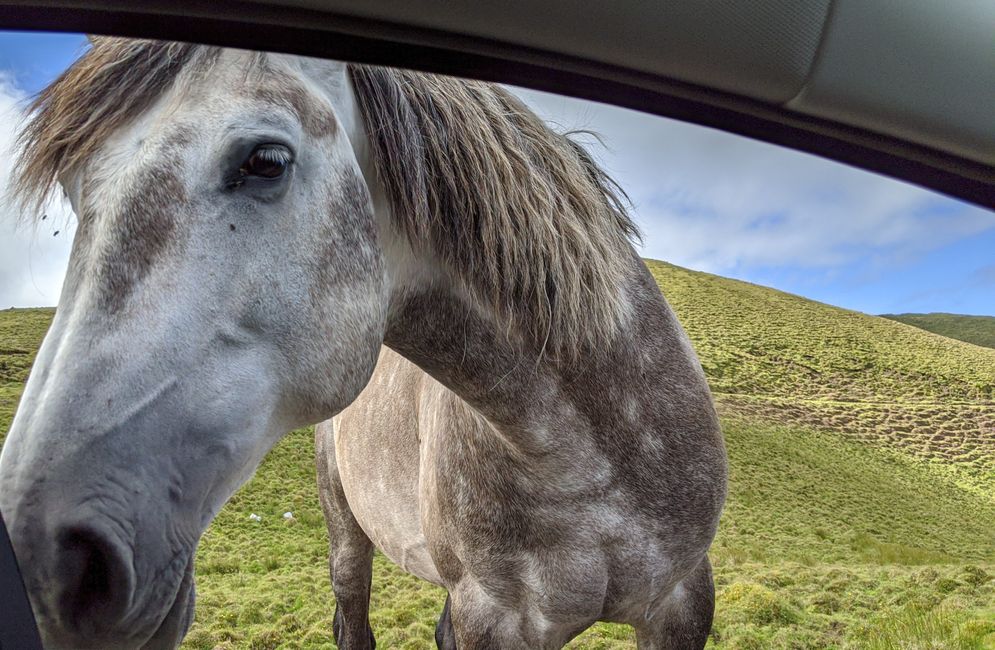
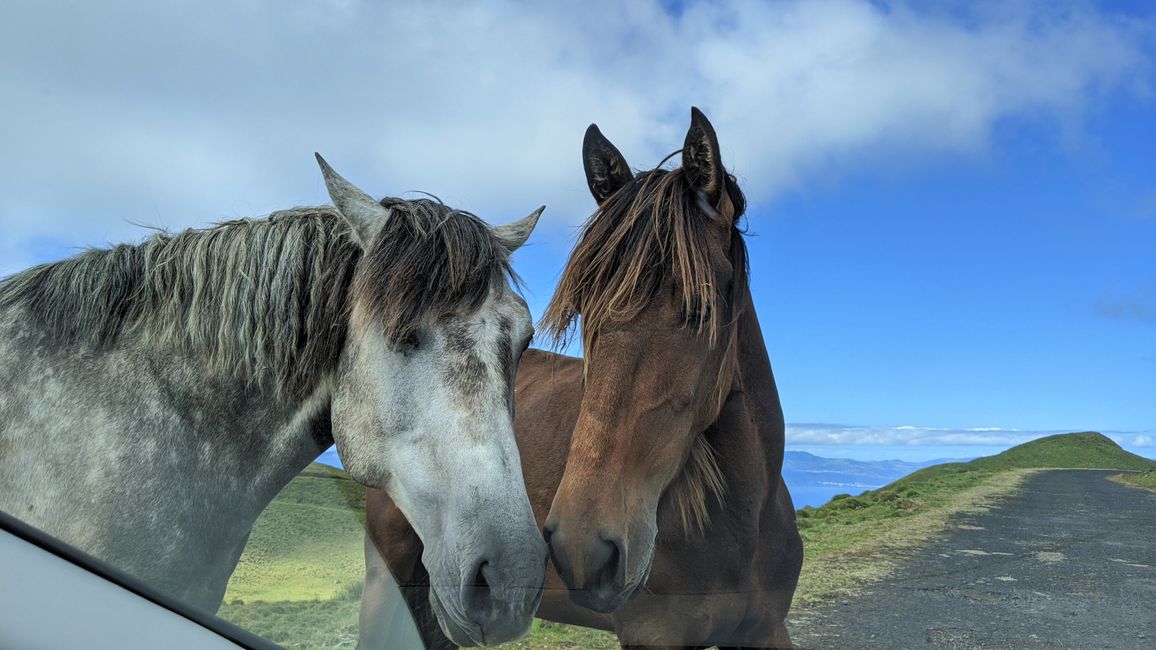
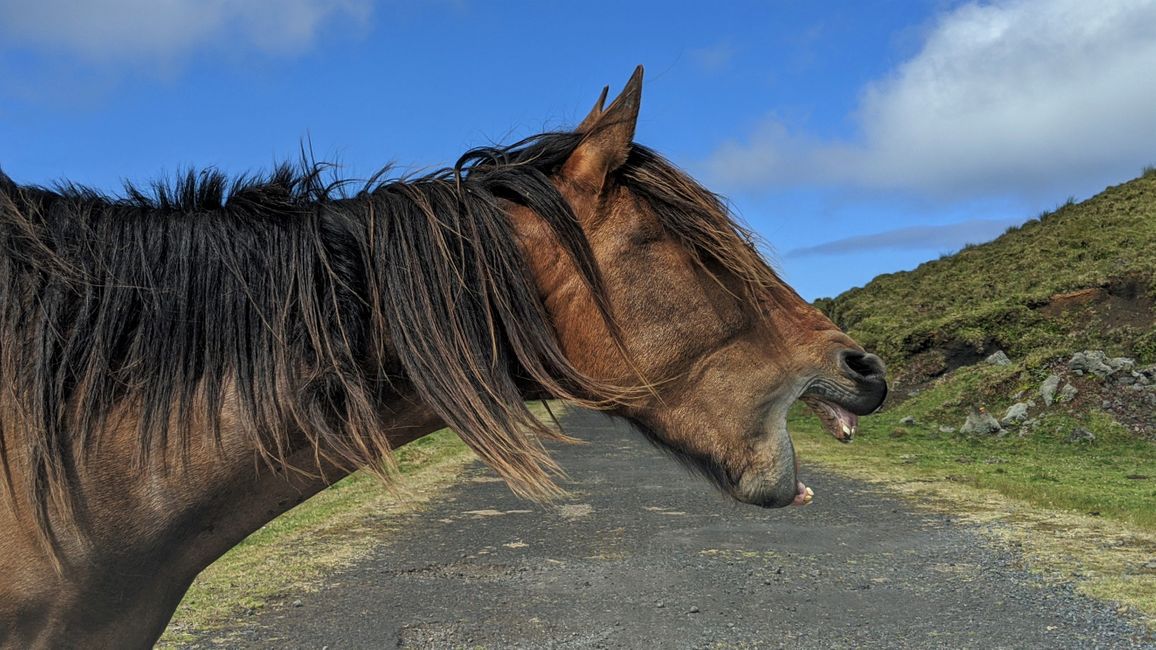
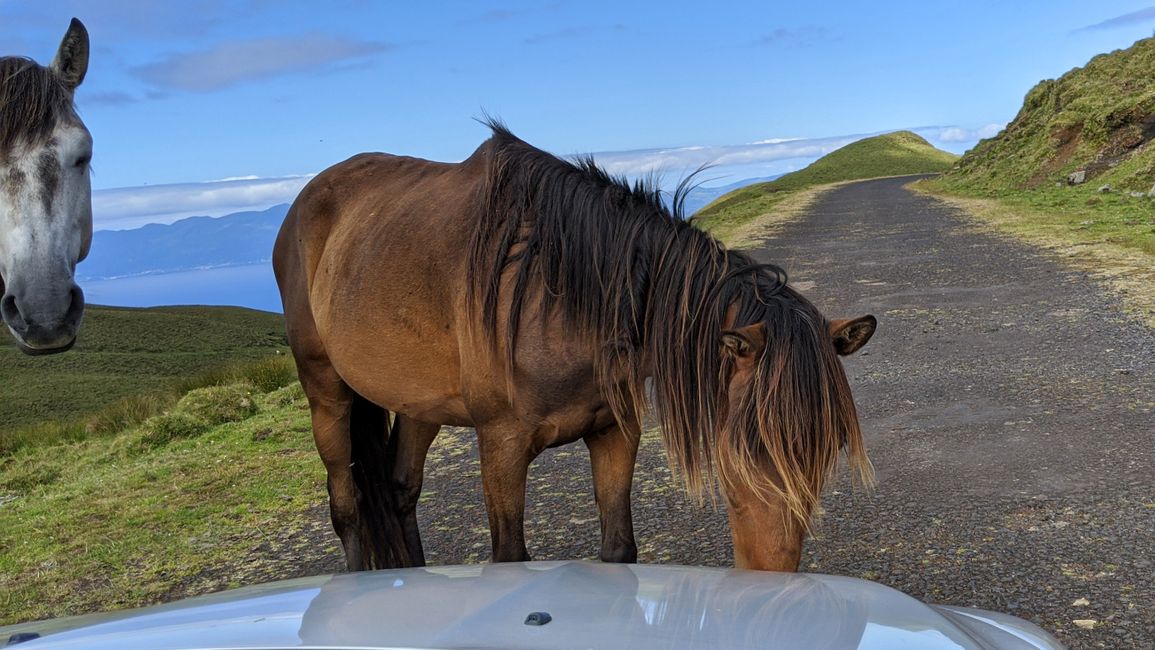
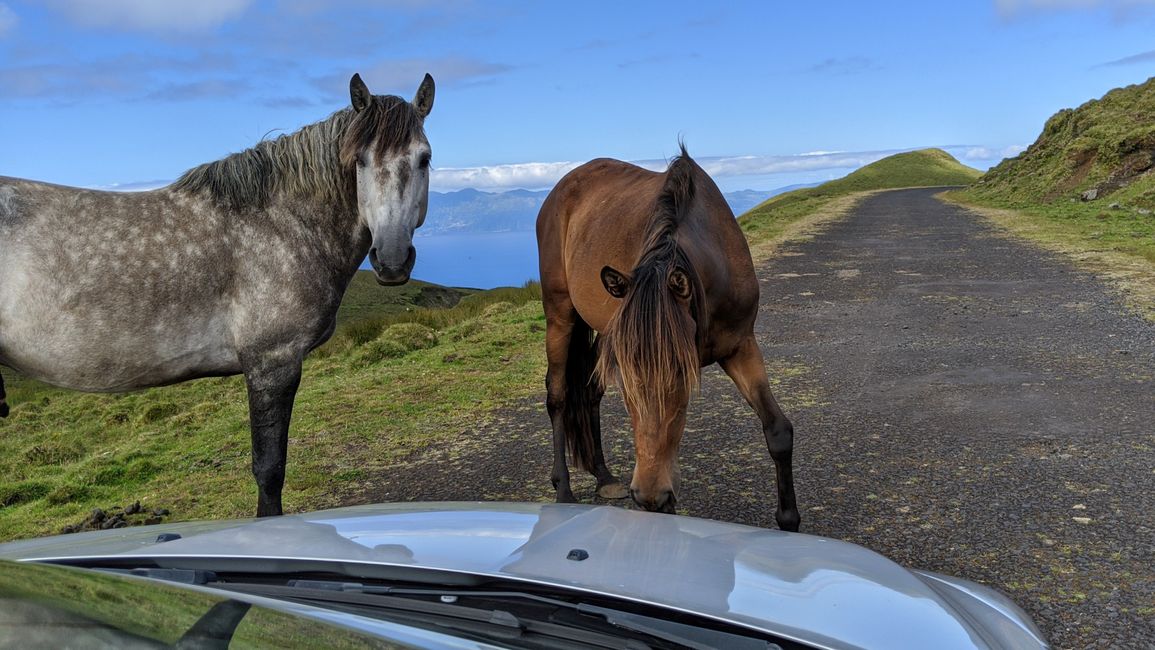
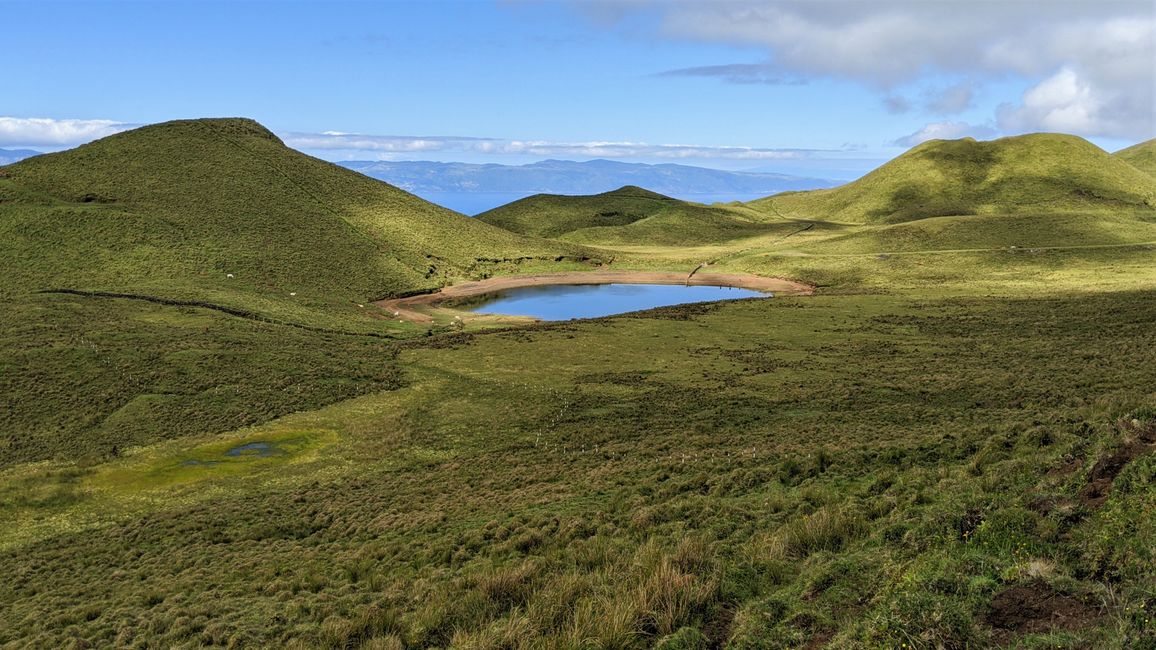
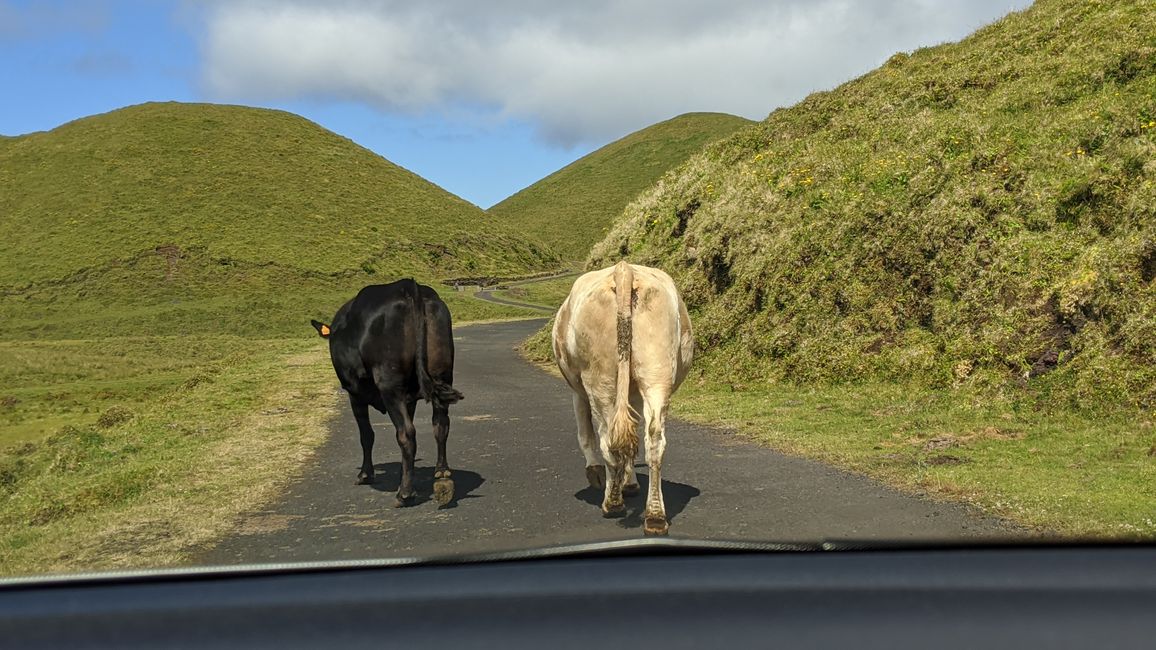
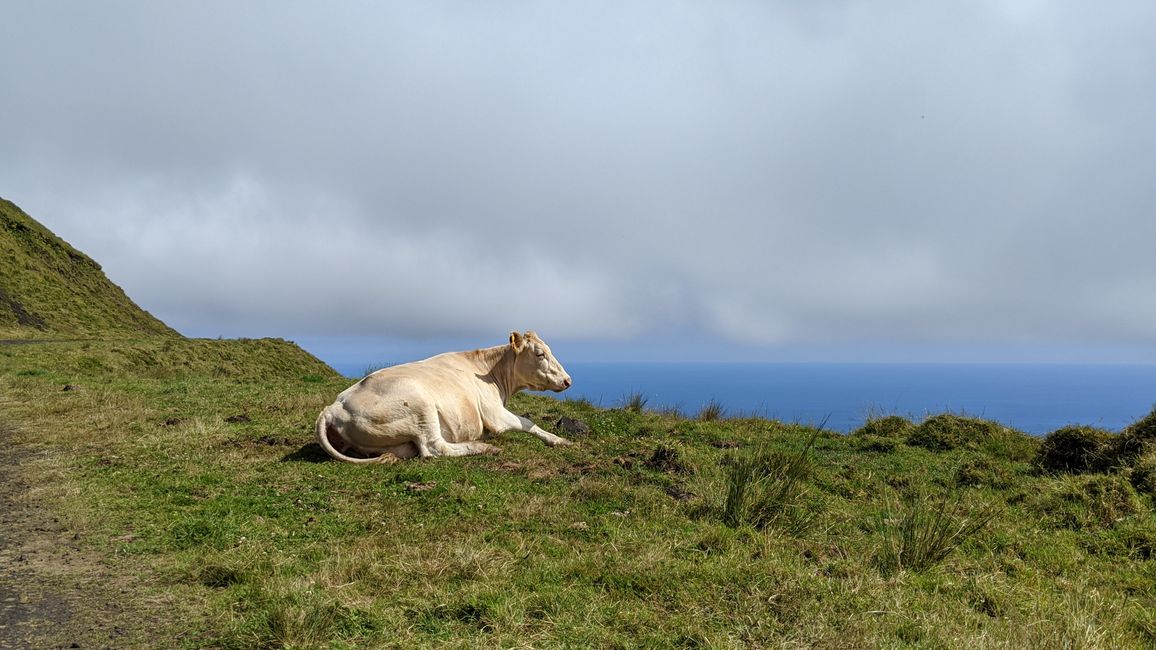
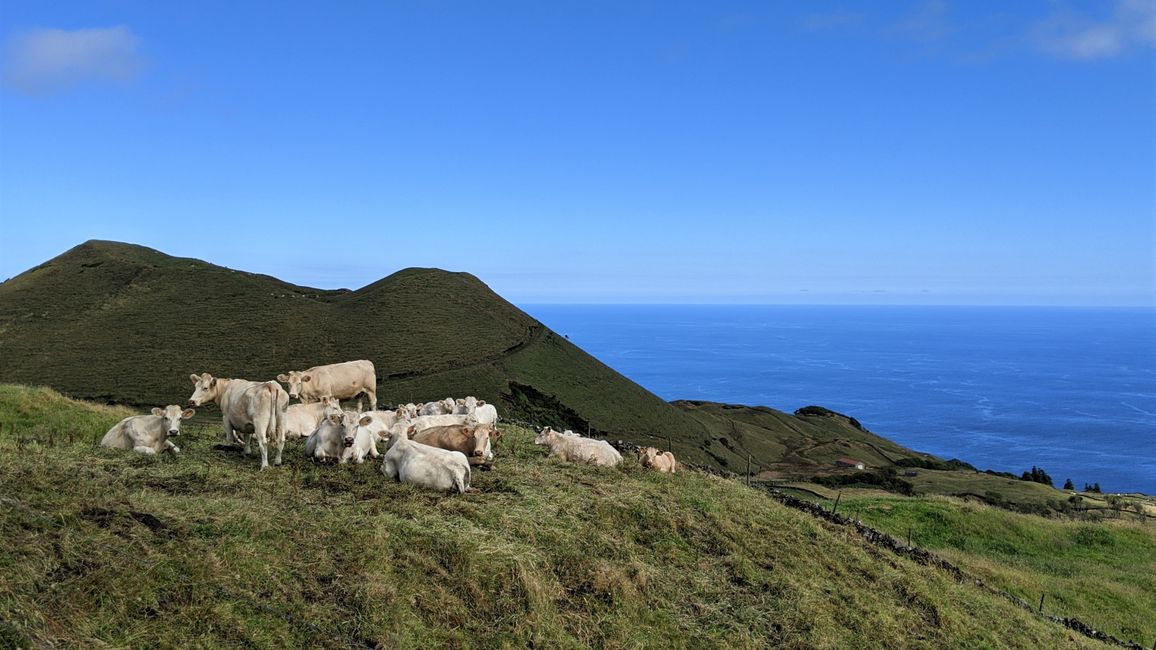

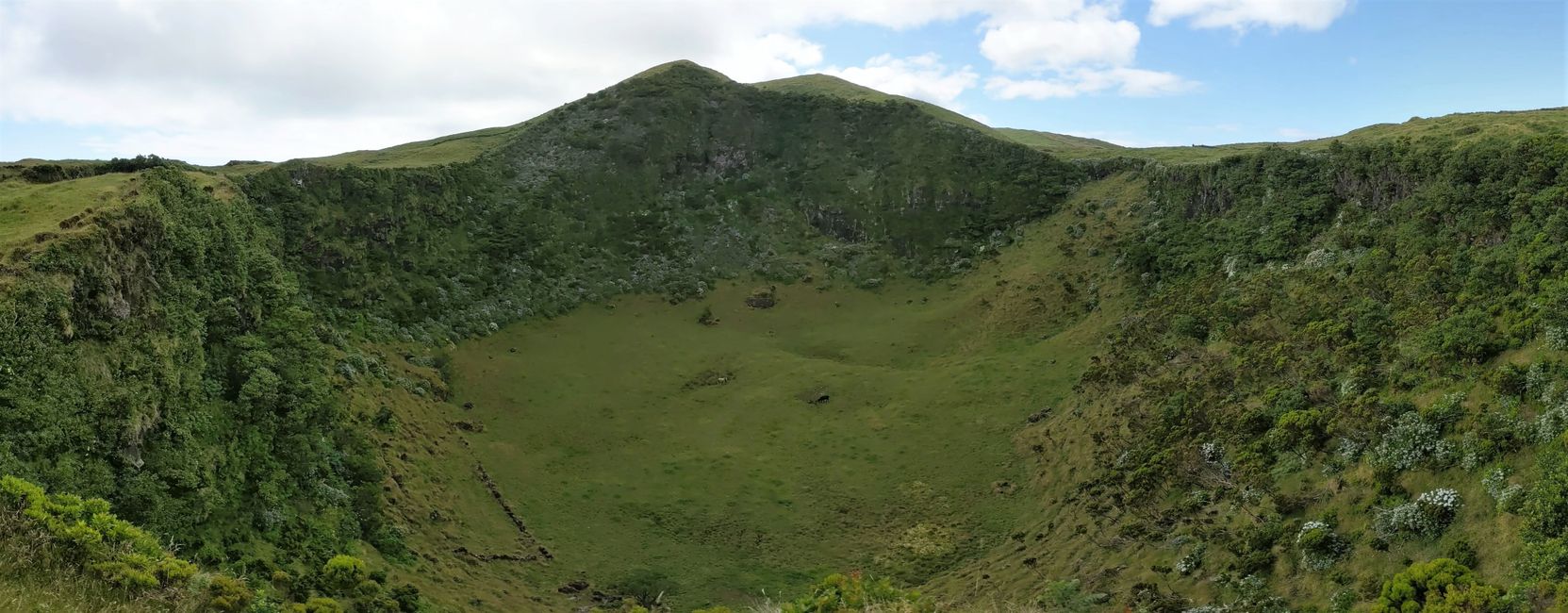
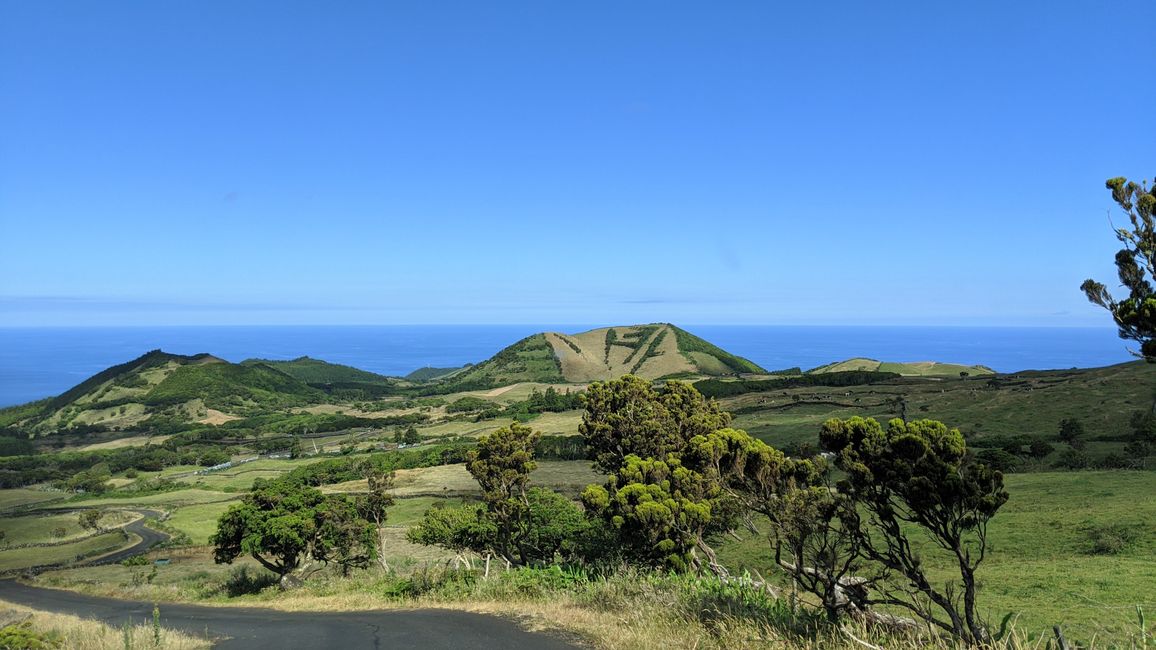
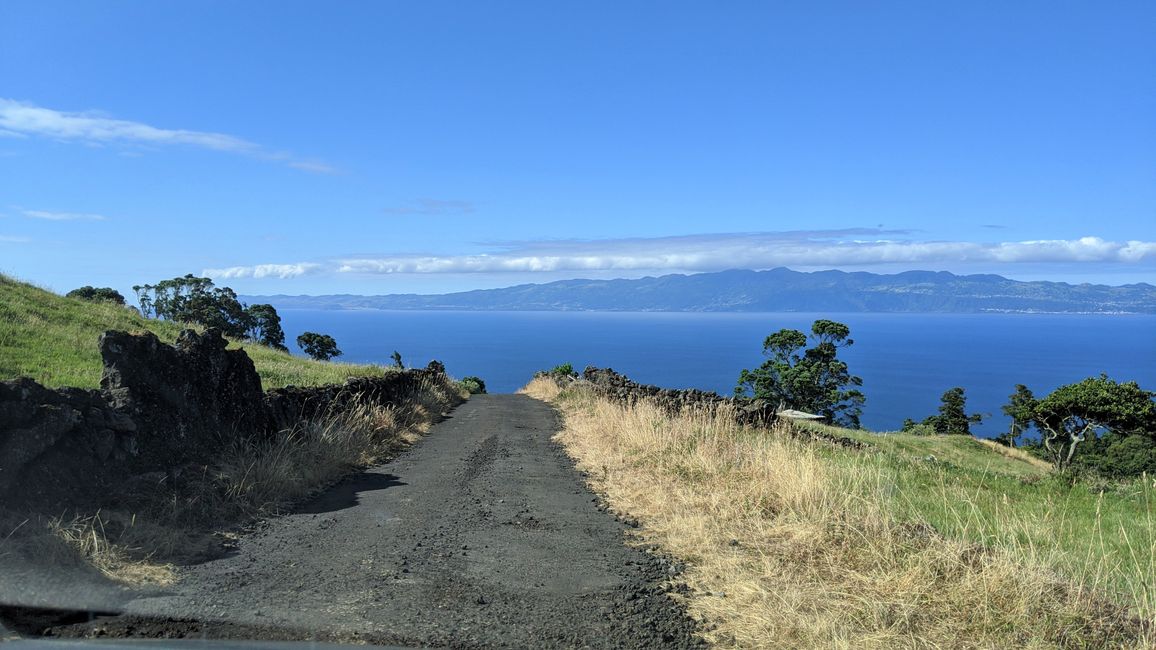
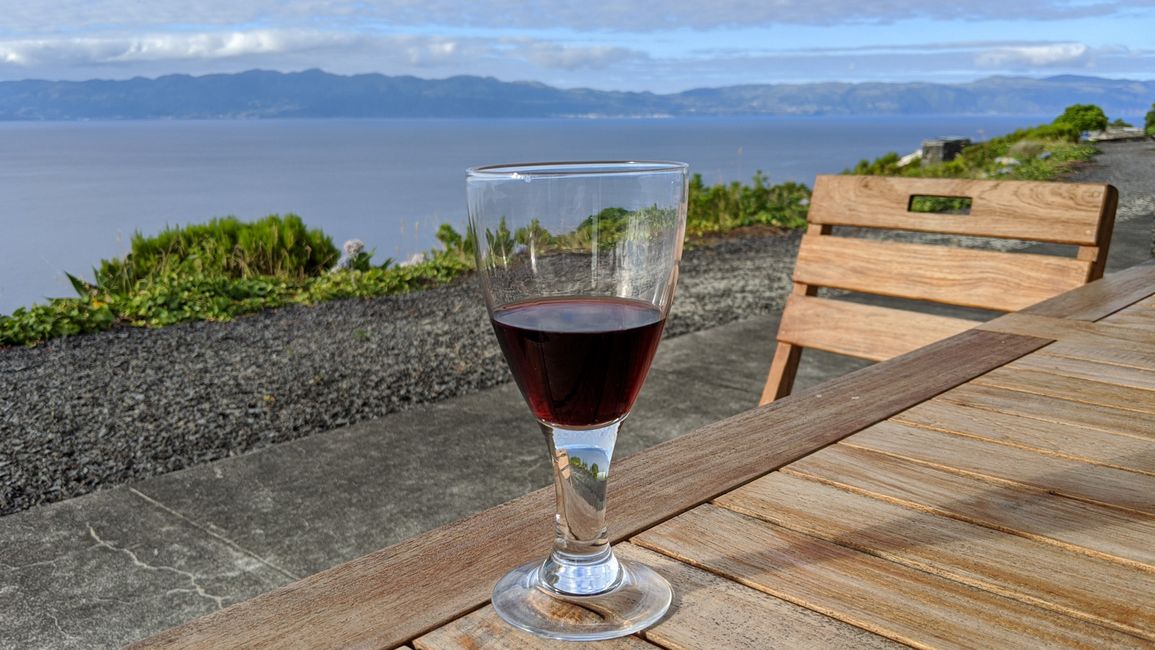
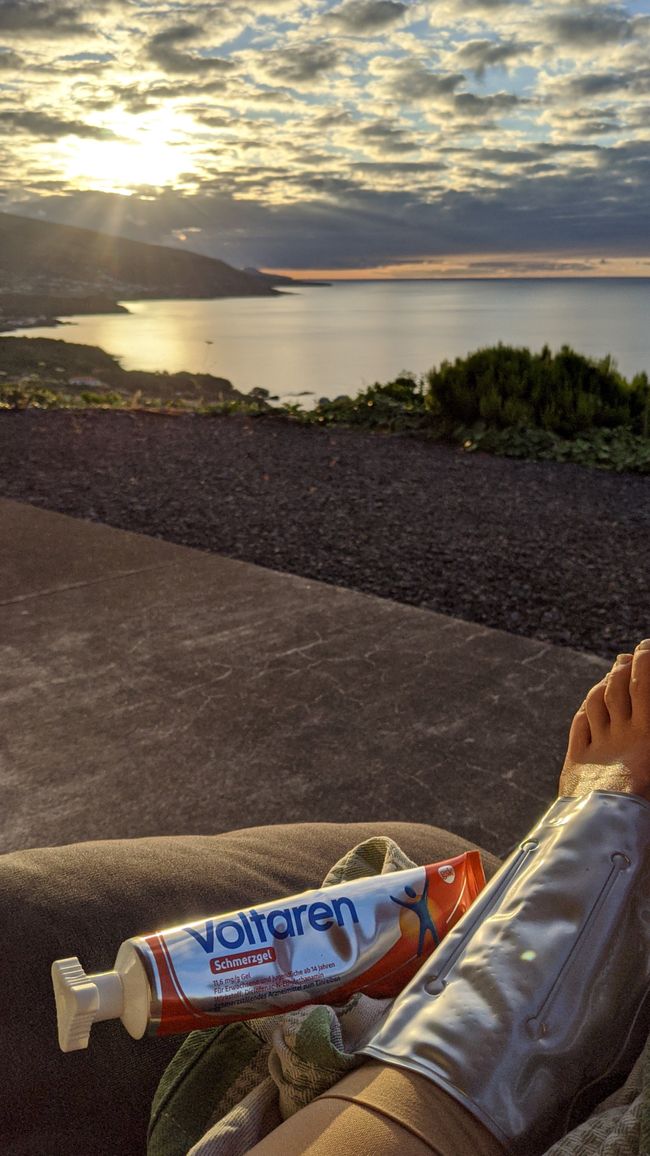
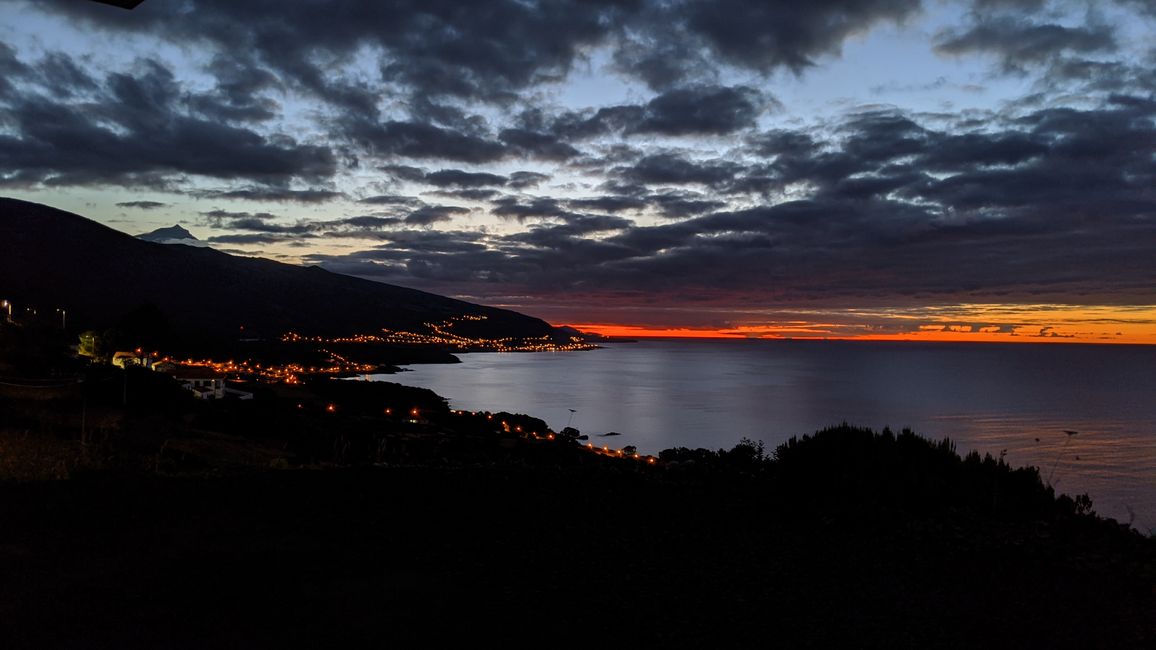
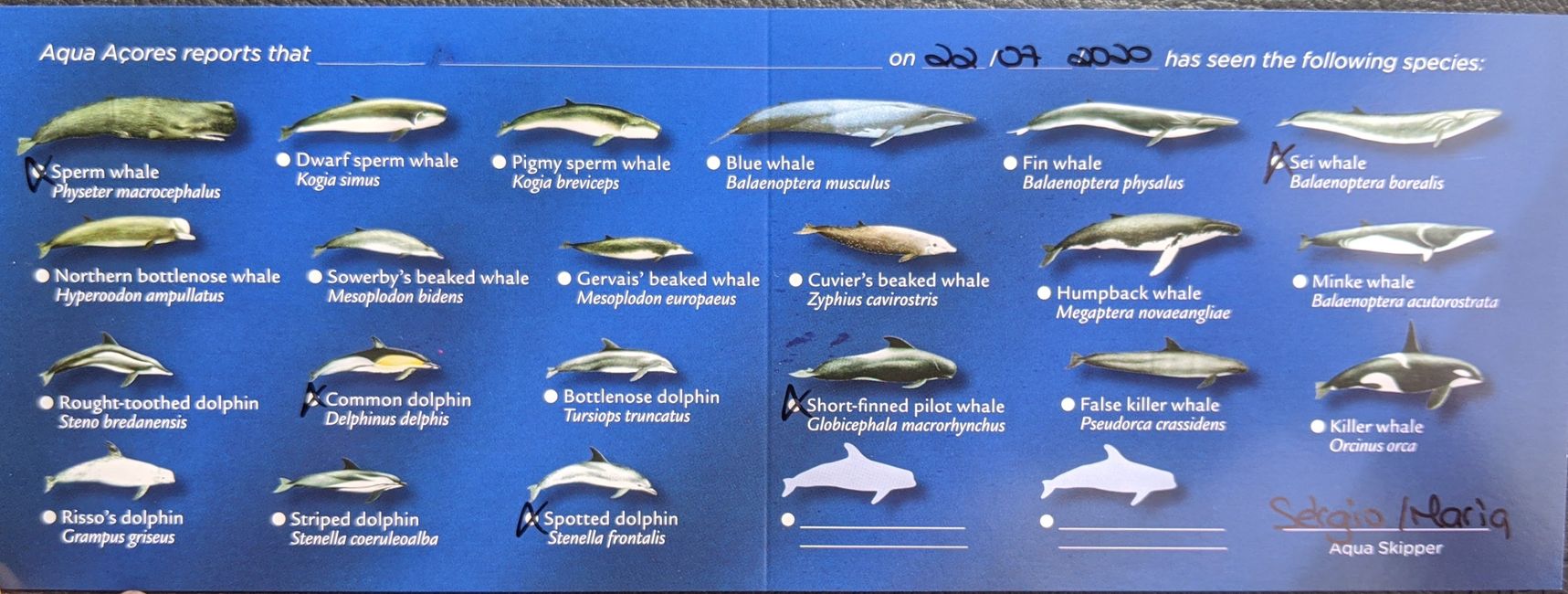
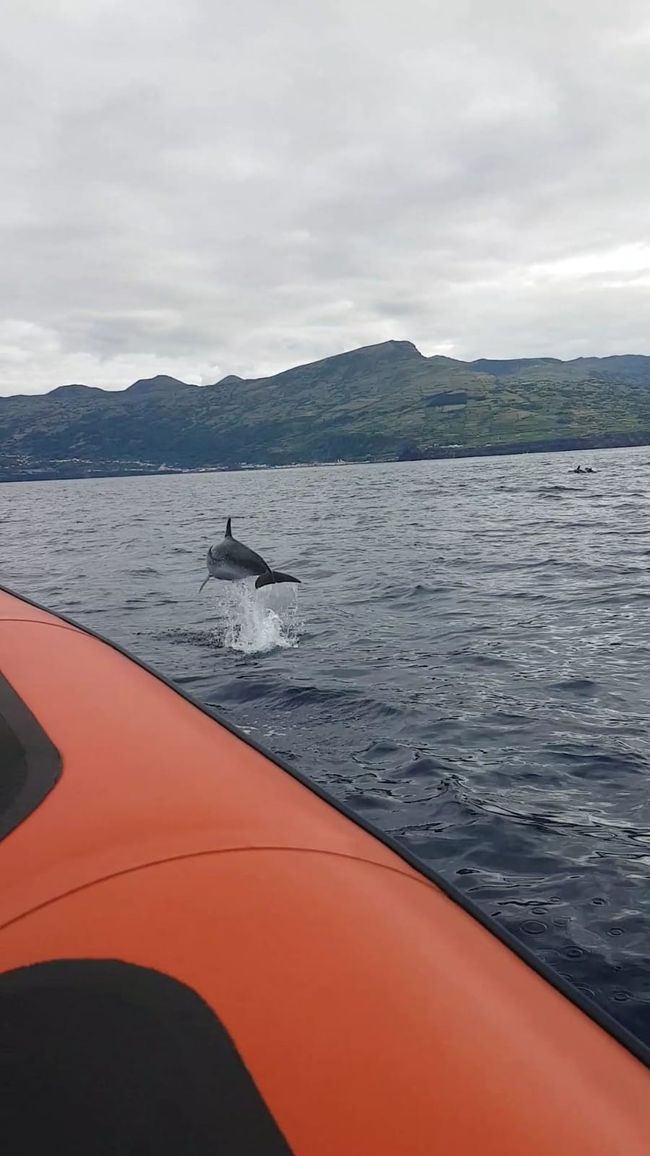
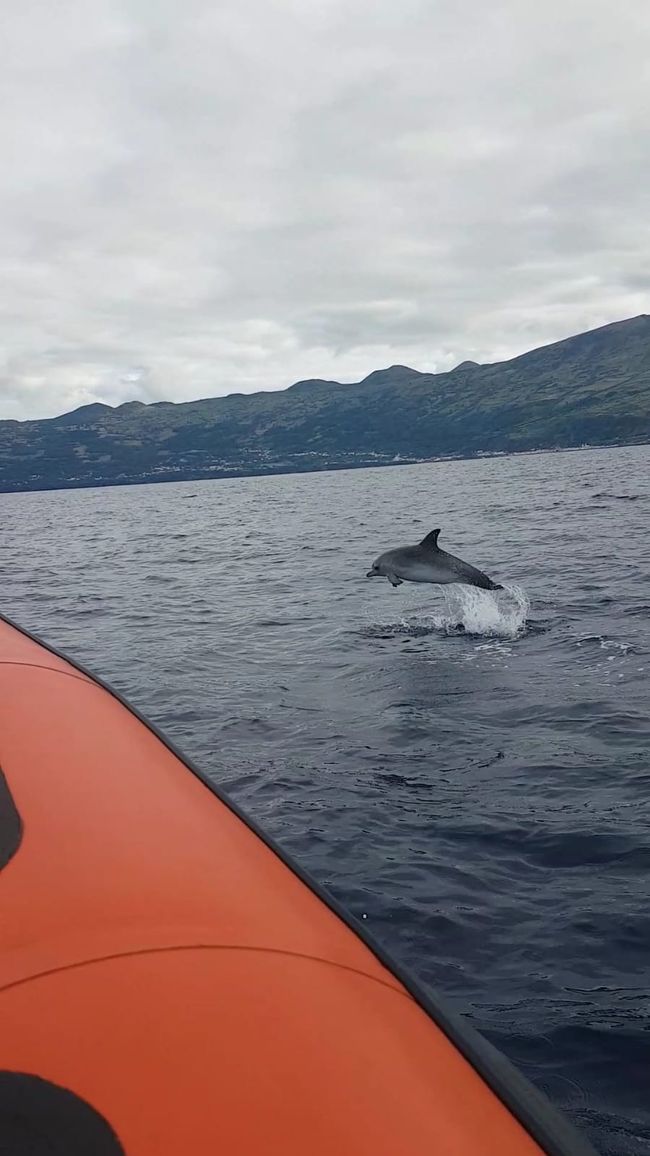
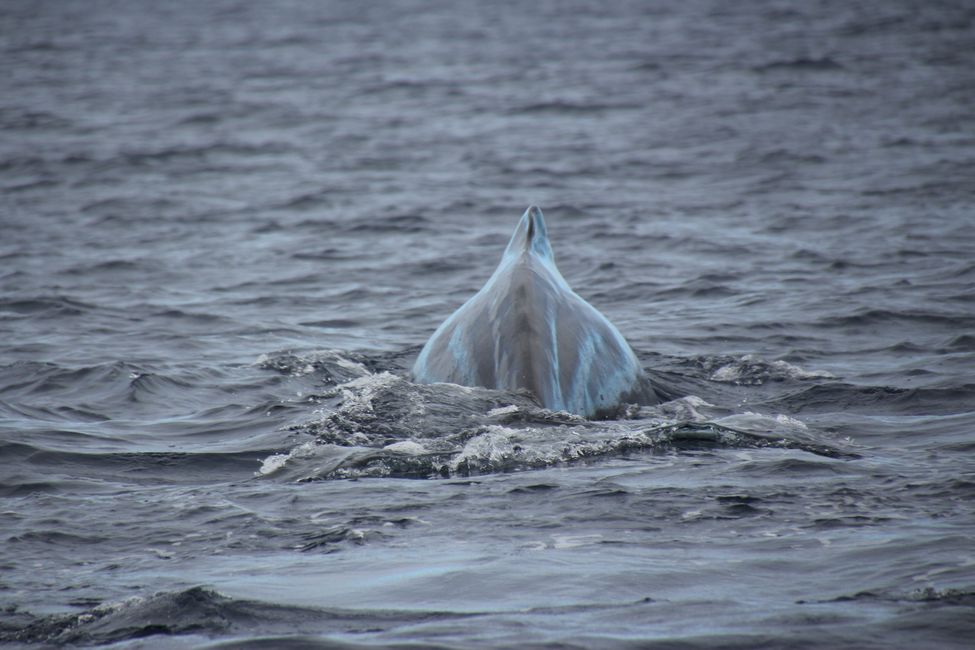
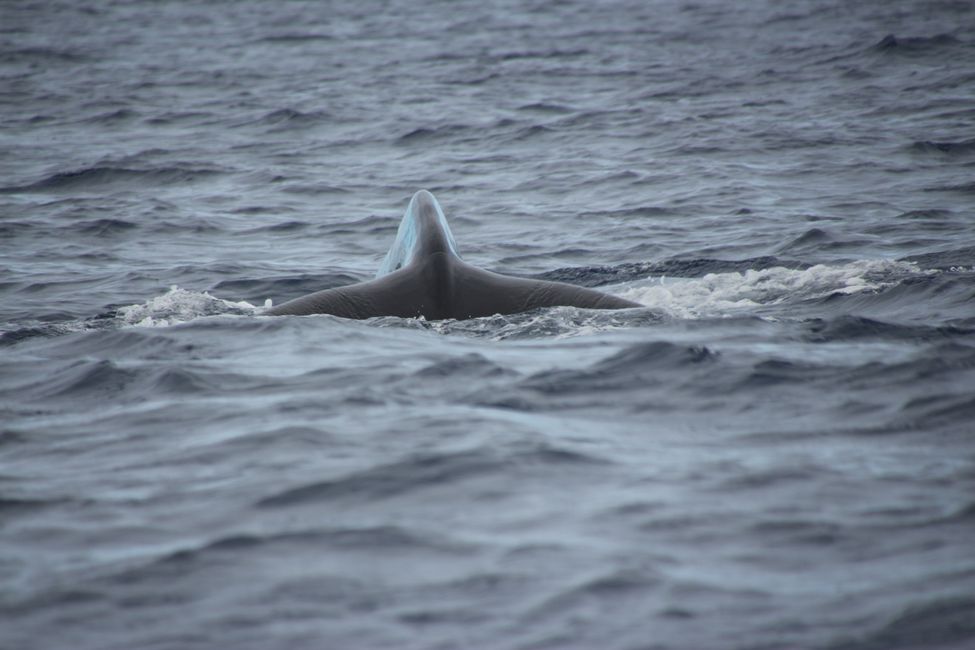
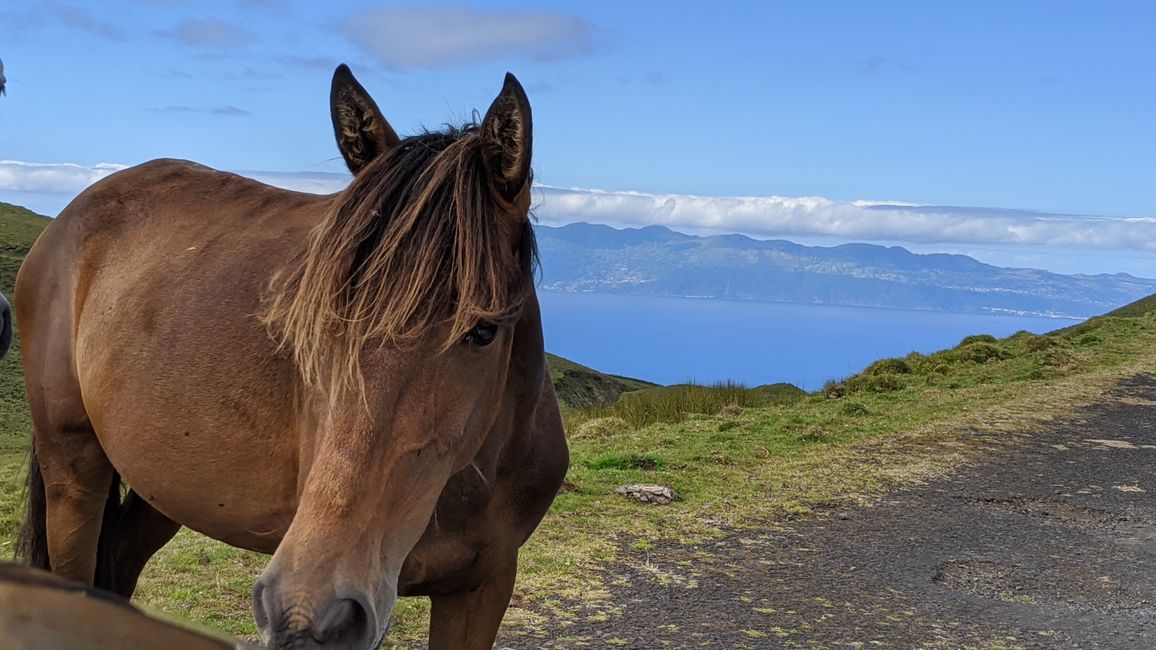
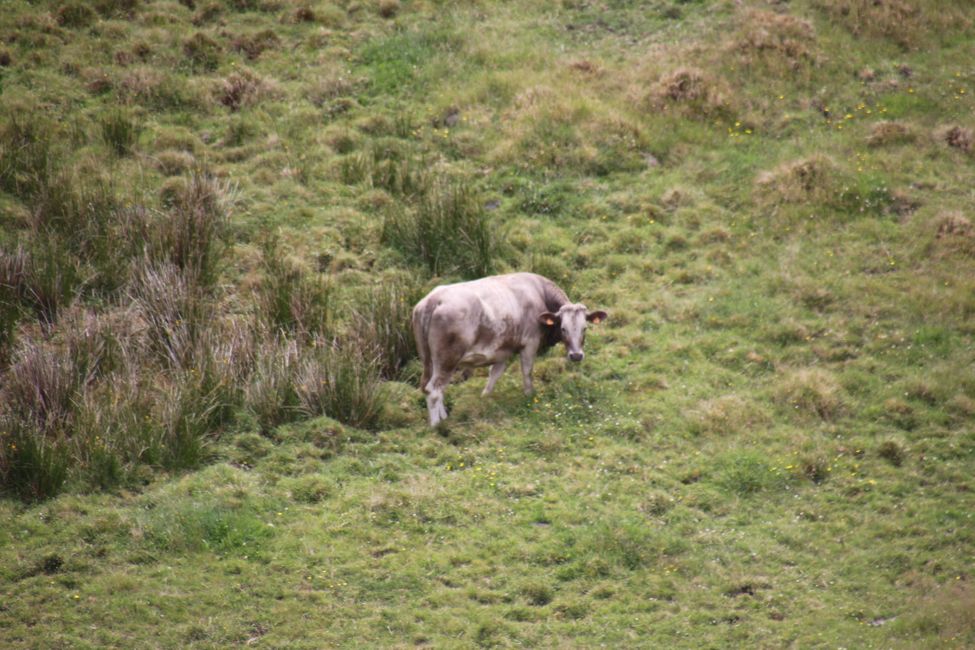
אַבאָנירן צו נעווסלעטטער
July 22, 2020
We wake up at 7 o'clock and have breakfast. Unfortunately, my hope for spontaneous healing did not come true, but the foot is already much less swollen and the blue bump has completely disappeared.
It hurts to walk, barefoot is not possible at all, but in my sturdy hiking shoes I have support and can 'limp' somewhat.
Therefore, we will participate in the Whale Watching as planned at 8:30 and then go to the health office or a doctor in Lajes. I got the tip with the doctor / health center from an Azores online group. So keep your fingers crossed!
We are very punctual in Lajes do Pico, a nice little town that used to be the main base of whaling and where the last whale was caught and processed in 1987.
Only one year later, the town changed from a whaling place to a whale watching place.
We booked our tour today with Aqua Azores because they were the only provider who offered online tours in advance.
We booked from home because at the beginning of July it was still uncertain whether there would be any whale watching tours at all and they were only running very limited tours.
(See Terceira)
This time we are 18 people on board the Zodiac 'Oceanus', which is 12 meters long and has over 30 seats (3x10 rows). 10 people more than on the Whale Watching in Terceira.
An older French couple (already on their second outing today and taking a seat at the very front of the boat), us, and a Portuguese extended family of 12 people including children.
Since I am afraid again that I could get really sick, I have prepared with Vomex and sit at the back of the boat with my son. In front of us, a row remains empty, everyone wants to sit in the front.
Daughter and husband sit in row 2, directly behind the French.
After the briefing and the note that wearing masks is mandatory (in Terceira we were explicitly advised not to wear masks on the boat...), we set off.
Compared to Terceira, it is very warm today. I only need my sweat jacket and windbreaker, the sea is completely smooth and the sun keeps coming out from behind the clouds.
Perfect - let's go!



After a short ride on the sea, we come across dolphins. But they are pretty chilled and just swim next to the boat instead of jumping.






Our Whale Watching leader Maria receives information over the radio that sperm whales have been spotted.
We leave the dolphins and race a bit across the sea, where the engine is turned off and we drift ahead.
This is the worst thing for my stomach... this slow swell, always up and down. I quickly take another sip of Vomex and shortly afterwards can hardly keep my eyes open.
We wait motionless for at least 15 minutes until the sperm whale finally appears. Now it blows out all its air from its lungs and takes in new air so it can dive again for the next 1-2 hours. Therefore, it is difficult to catch the short moment when the sperm whales take in air.

We don't really see much of the sperm whale. The highlight is when it dives down and you can see the huge fluke sinking vertically.
And that's what we see now!


Pretty cool!
Apparently there is another whale here somewhere, so we have to 'wait' again. But after another 15 minutes, the Portuguese become very impatient and we continue.

We initially mistake the Yellow-billed shearwaters for seagulls, but upon closer inspection, we realize that they are the birds with the delicate voice that keep us busy after sunset

They spend the entire day from sunrise to sunset on the sea, then they return to land - with deafening 'singing'.
So far, I thought the bird with the funniest voice was the Australian 'Kookaburra' (here a video of his 'laughter'), which made us laugh so often during our Australian vacation (travel blog abenteuer-down-under) two years ago, but the Yellow-billed shearwater is something else!
If you want to listen in, you can listen to this video - then you will understand me *g*.
We slow down and spot some pilot whales (they look more like huge dolphins).



Unfortunately, the pilot whales are also very chilled and hardly come out of the water.
Over the radio, we receive the information that a sperm whale has surfaced.
We race at high speed over the sea, causing the Portuguese in front of me to lose their hat and sunglasses (since I am sitting a bit behind them, I catch them right away)

When we arrive at the spot, we already see the sperm whale directly.
We are closer to the second whale than to the first one and can see it better.







It's gone.
We continue driving over the sea and in the distance (unfortunately very far away) we see 2 sei whales.
After over 3 hours, we return to the harbor.
On the way back, we see more dolphins and lots of shearwaters.






After the Whale Watching, we receive a map showing what we have seen. I think that's a very nice idea:

The highlight, by the way, was the older French lady who leaned half out of the boat during the dolphin sightings and tried to attract the dolphins with loud 'Put-put' and feed them with bread....
No comment....
Further up the road is the health center 'Centro de Saúde' according to Google Maps. We find it immediately, but a staff member explains to us with sign language and broken English that there is no doctor here. I would have to go to 'the old school', as there is a doctor and an 'X-ray machine' there.
Hm... ok...
With the information, we don't get any further on Google Maps, so my husband asks at the nearby pharmacy.
We find the aforementioned 'old school' and discover the back entrance for medical emergencies. You really have to know that. There are no signs here - how are you supposed to find it on your own!?
I ring the reception desk and am immediately received. After assuring them that I do not have a cough, fever, or any other Covid-19 symptoms, I am allowed to enter.
My problem is quickly explained, and after a few minutes, a doctor (estimated to be 20 years old) has time for me. She can hardly speak English, but thanks to Google Translate, the problem is quickly explained.
She examines my foot and presses on various spots - done. She concludes that nothing is broken, so an X-ray is not necessary.
It's sprained, I should elevate my leg and continue to cool it.
Great...
I've already come to that conclusion.
My husband is reassured by this. Nothing is broken, I can walk, so it's 'just' a sprain, and the vacation can continue!


I hobble back to the car and don't know if I should be relieved. Yes, I also had the feeling that nothing was broken, but what about the ligaments!?
Okay, that won't be resolved during this vacation. Close your eyes and go through with it.
I organize an appointment with the traumatologist for Monday morning next week directly through a friend—better safe than sorry.
I reluctantly skip the whale hunting museum Museu dos Baleeiros and wait in the car after lunch with my leg elevated.
The kids visit the museum with their dad and contribute these pictures:








We consider what to do with the rest of the day. The weather actually invites you to go swimming, the sun is shining, and it is warm.
We drive from Lajes do Pico across the island on the EN-2 towards Sao Roque do Pico, where we want to go swimming.
However, the closer we get to the coast on the other side of the island, the thicker the clouds become! Crazy!
While the weather is nice on the south coast, the north coast is covered in clouds.
So we quickly turn around and drive back to the junction that leads to the lakes Lagoa do Caiado and Lagoa Seca, as well as towards Ribeirinha near our vacation home.

We quickly discard the idea of driving towards Pico since it is once again hiding in its cloak of clouds.




And of course, cows must not be missing on Pico.
There are quite a few of them here....

We stop at the lakes Lagoa do Caiado and Lagoa Seca.
The cloud front on the coast seems to have moved westward because you can see the island of Sao Jorge very nicely.



We continue into the hilly hinterland of Pico.


After a few curves, we suddenly find ourselves in 'cow land'. There are cows on meadows and fields next to the road everywhere.


A few curves later, the cows are no longer fenced in. It seems like they can roam around everywhere here.
And apparently, the best spots are right next to the road











A few hills and winding roads later, we find ourselves in the middle of a herd of cows again. But this time, there are also horses.
Two of them are standing directly on the road and come towards us immediately when we stop just in front of them.
The grey horse immediately sticks its head curiously through the open windows, as if to say 'Hello'.


The two inspect our car


Then, the brown horse starts licking the motor hood.
We are practically in the 'car-horse-wash'.

He doesn't want to stop either. Even when we start the engine, the brown horse is not impressed and happily continues to lick the motor hood.

Eventually, an approaching car behind us catches the interest of the grey horse, who positions itself demonstratively in front of the approaching car. The brown one obediently follows it, and we can continue driving.
In the rearview mirror, we see that the car behind us is also being 'inspected'. Hihi, let's see how quickly they will move forward now, because in the meantime, the cows from next to the road have also positioned themselves on the road.

However, our free ride doesn't last long. Just 2 turns later, the next cows trot in front of us on the road and see no reason to make way for us...
So we have no choice but to follow the cows in walking pace until they reach their turnoff to the water hole

A bit further, the road forks.
We decide to take the turnoff to the 'Caldeira' and hope that the gravel road we are now entering will soon improve.
While stones 'fly around the car', we again see lots of cows.


But we wonder where the Caldeira is, as we don't see any 'mountain' at all.
But we can't, because shortly afterwards, we stand in front of a huge crater.
This is the Caldeira!
We only recognize the steep walls of the crater, which are completely overgrown. There are actually 3 cows grazing in the middle of the crater! We don't know how they got down there. We don't see any paths or entrances along the steep crater walls.
Very strange....



The road intersects with the paved road again a few kilometers later, and we continue towards the coast

The last kilometers are asphalted, but in a catastrophic condition. One pothole follows the next - we should have taken the longer route and not the 'shortcut'....

Nevertheless, the drive through the hinterland was great and is highly recommended!!!
Back at the vacation home, it's time to chill.

We enjoy the evening and the sunset with a glass of wine on the terrace - and if I have to have a foot injury, at least with a view


אַבאָנירן צו נעווסלעטטער
ענטפער
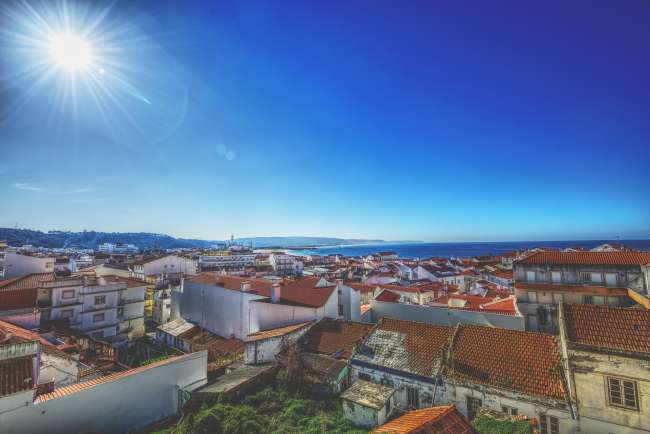
רייזע ריפּאָרץ פּאָרטוגאַל
